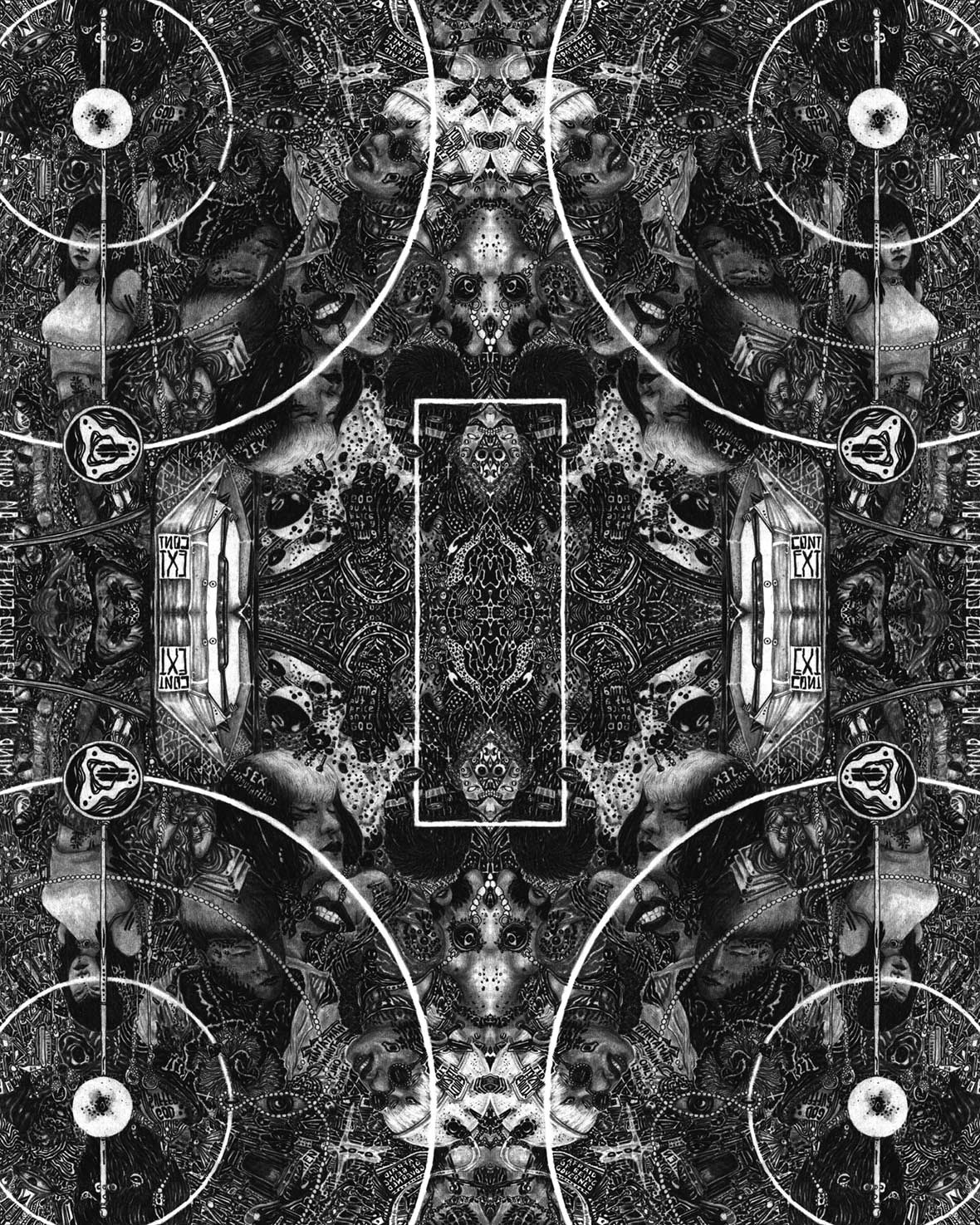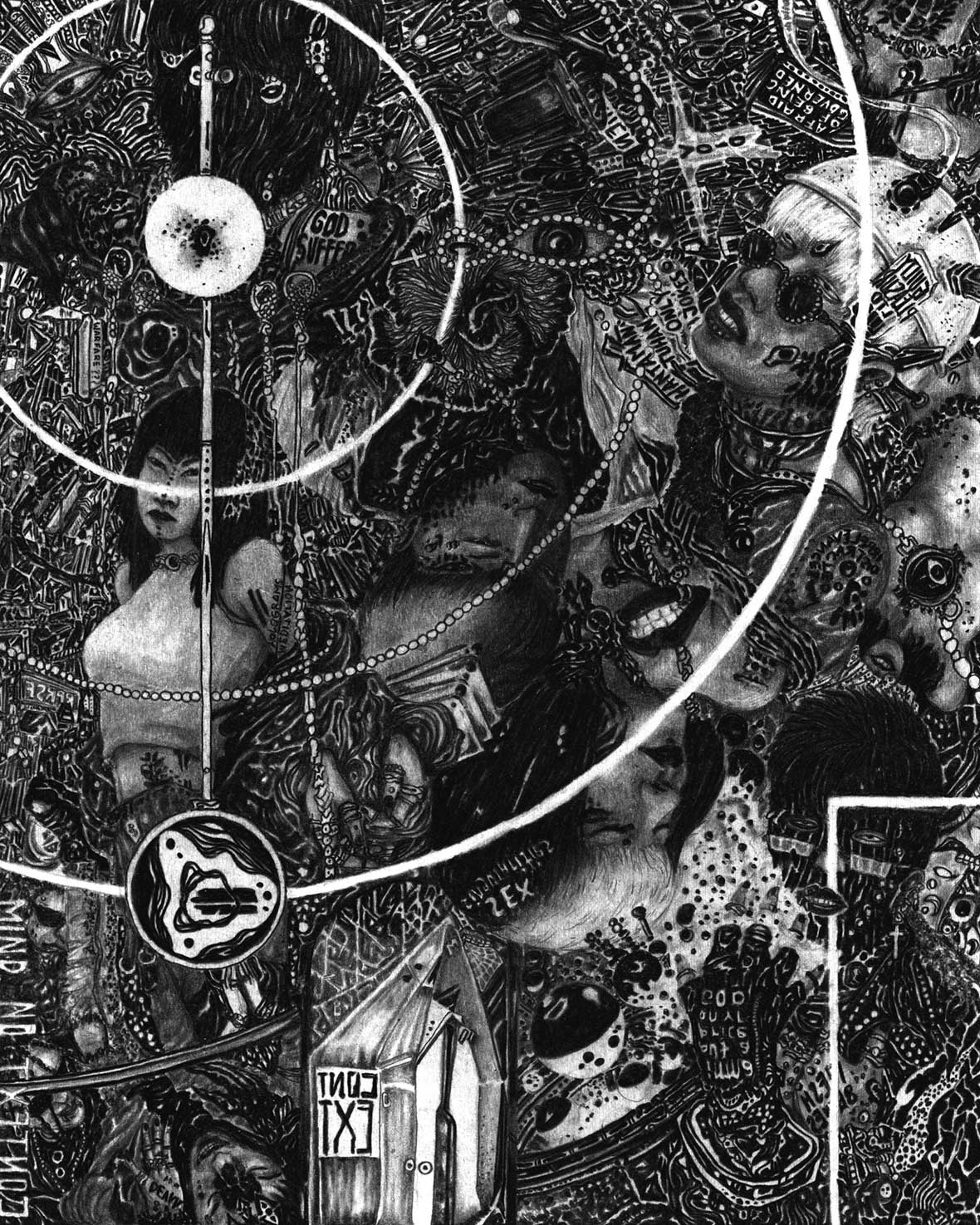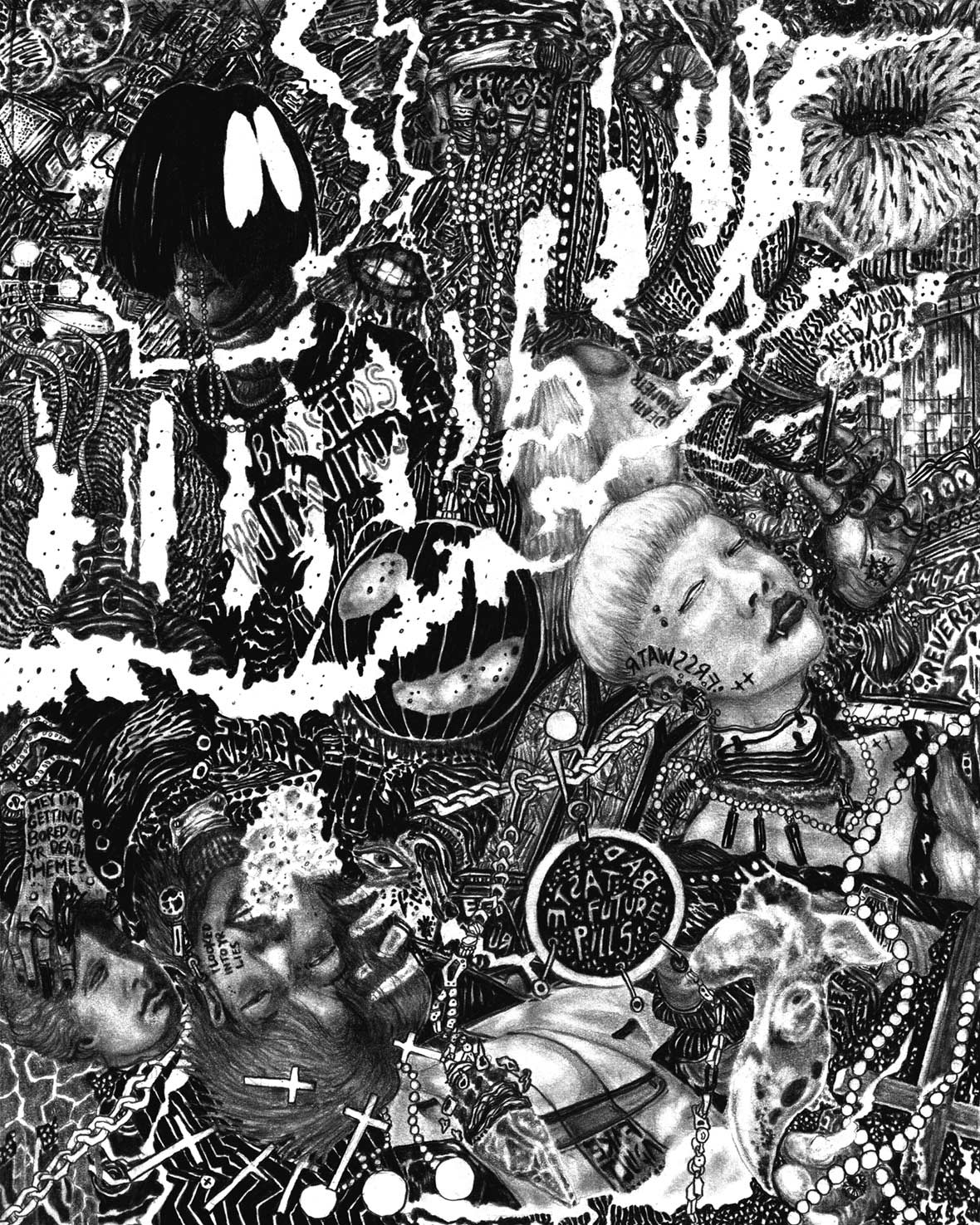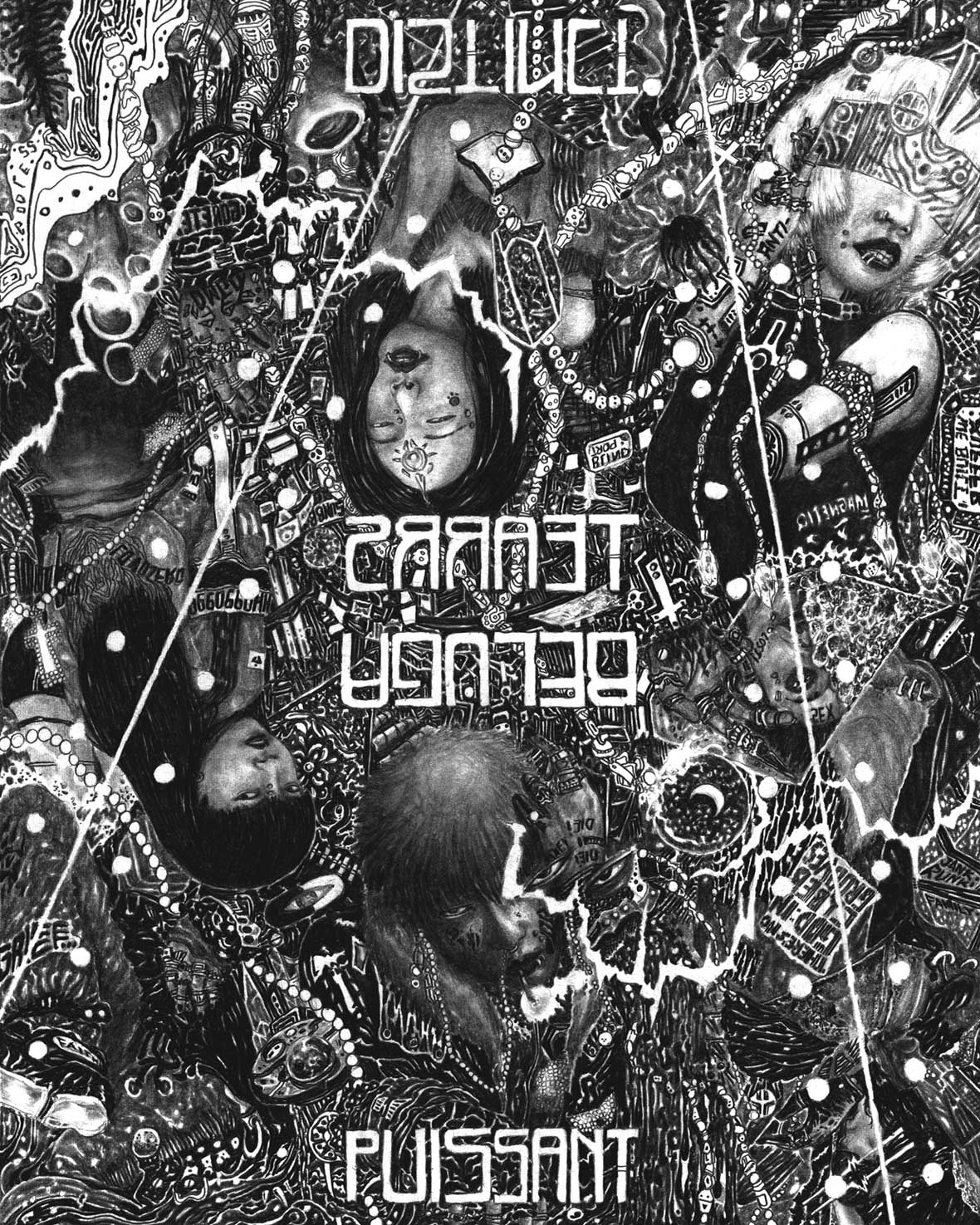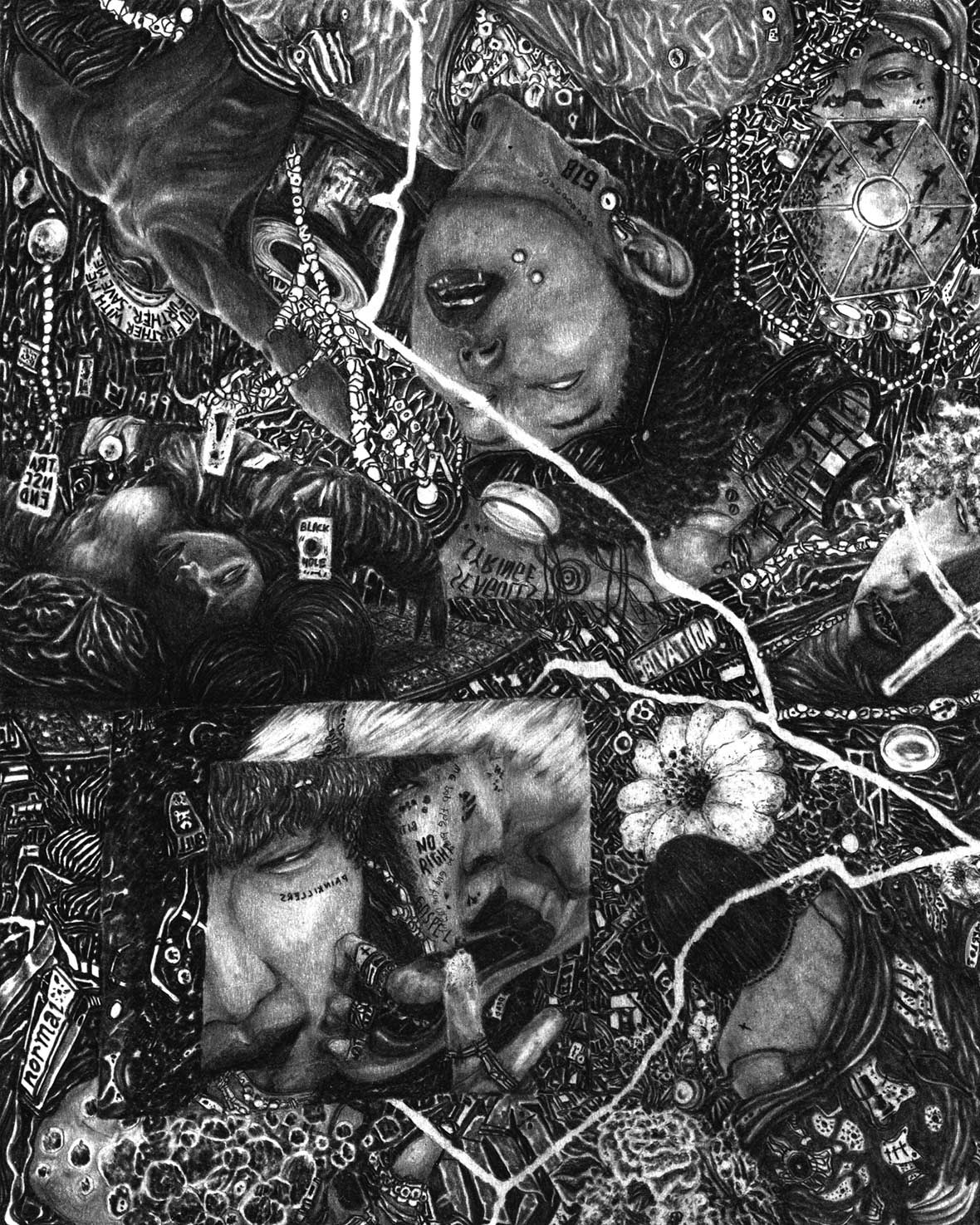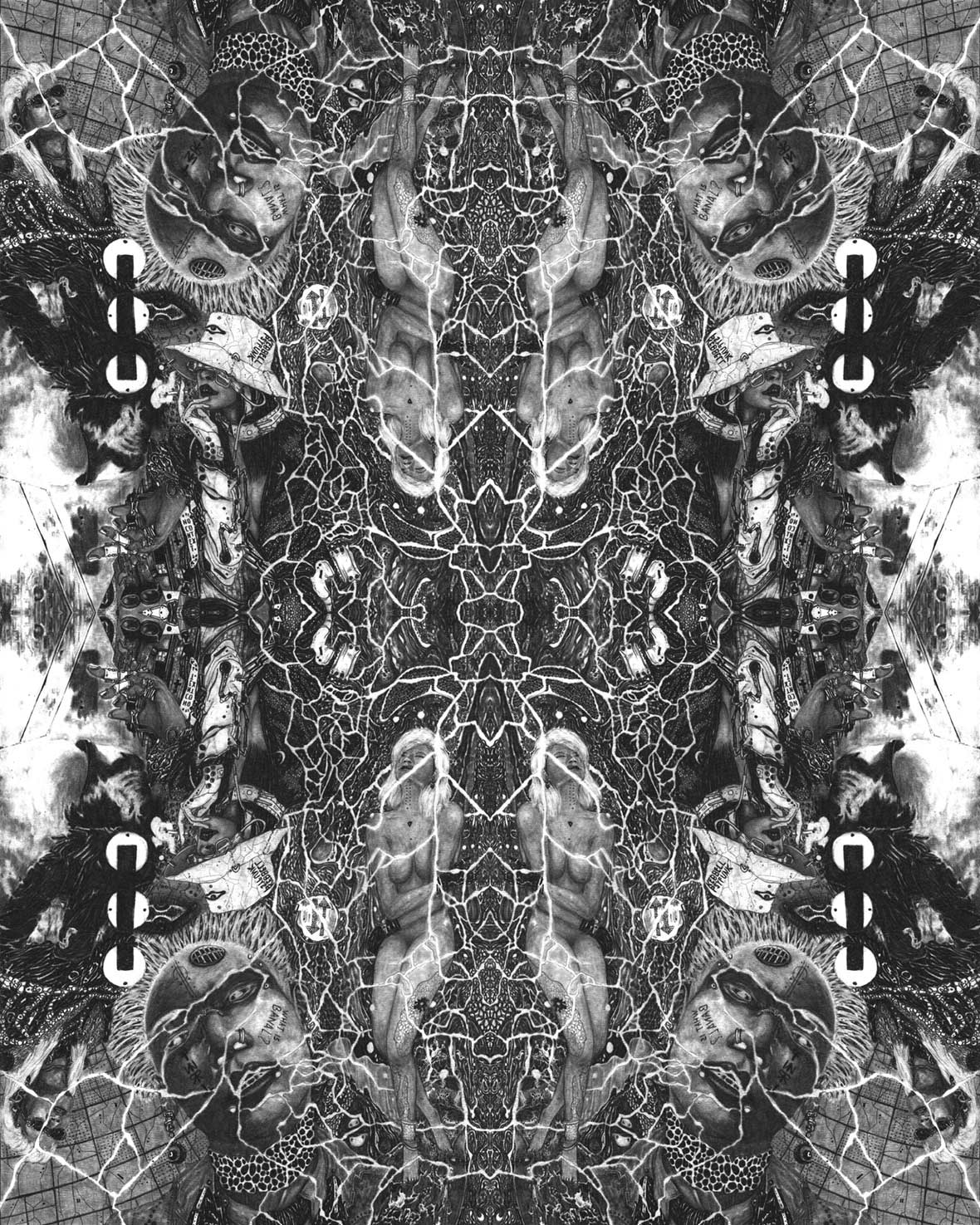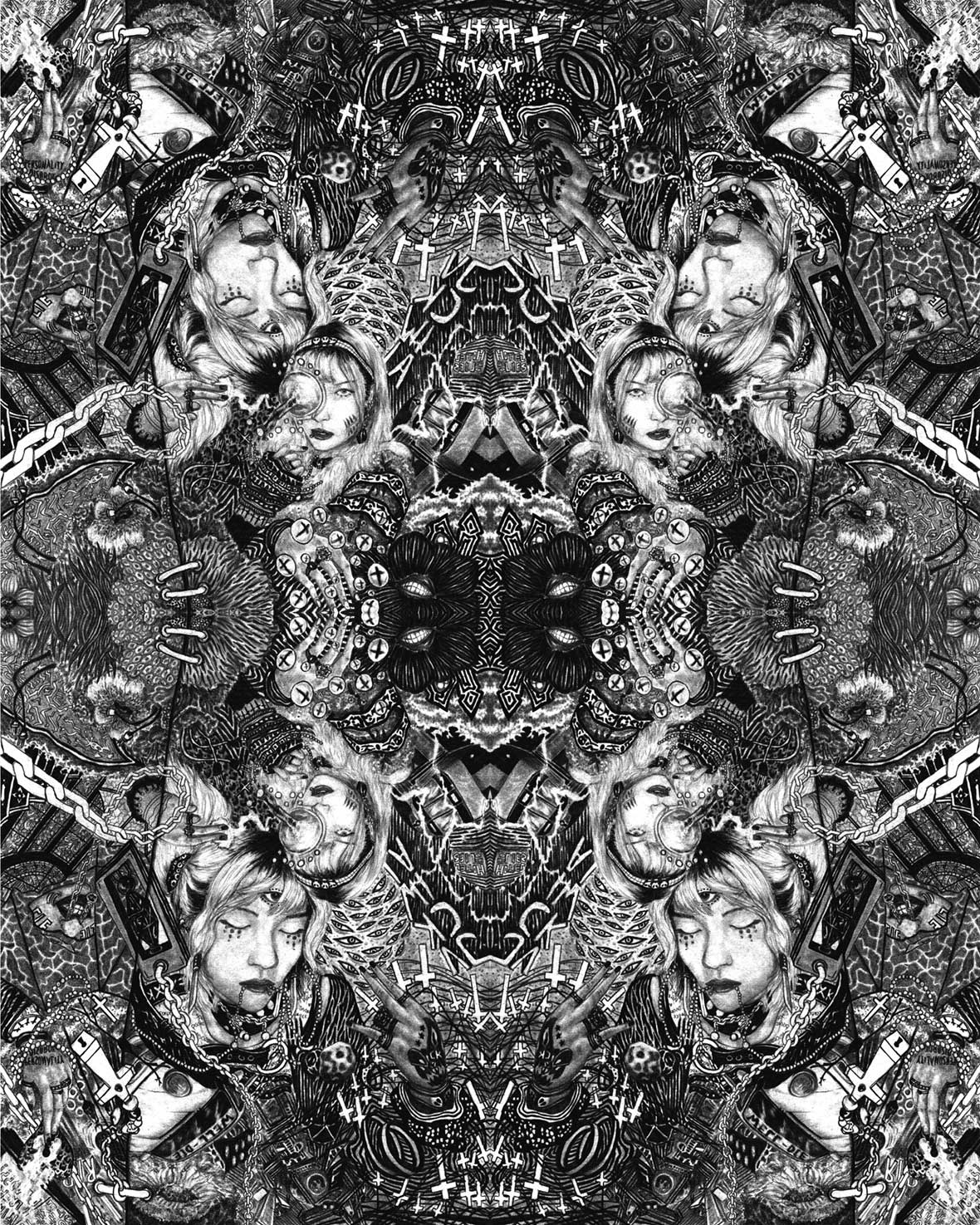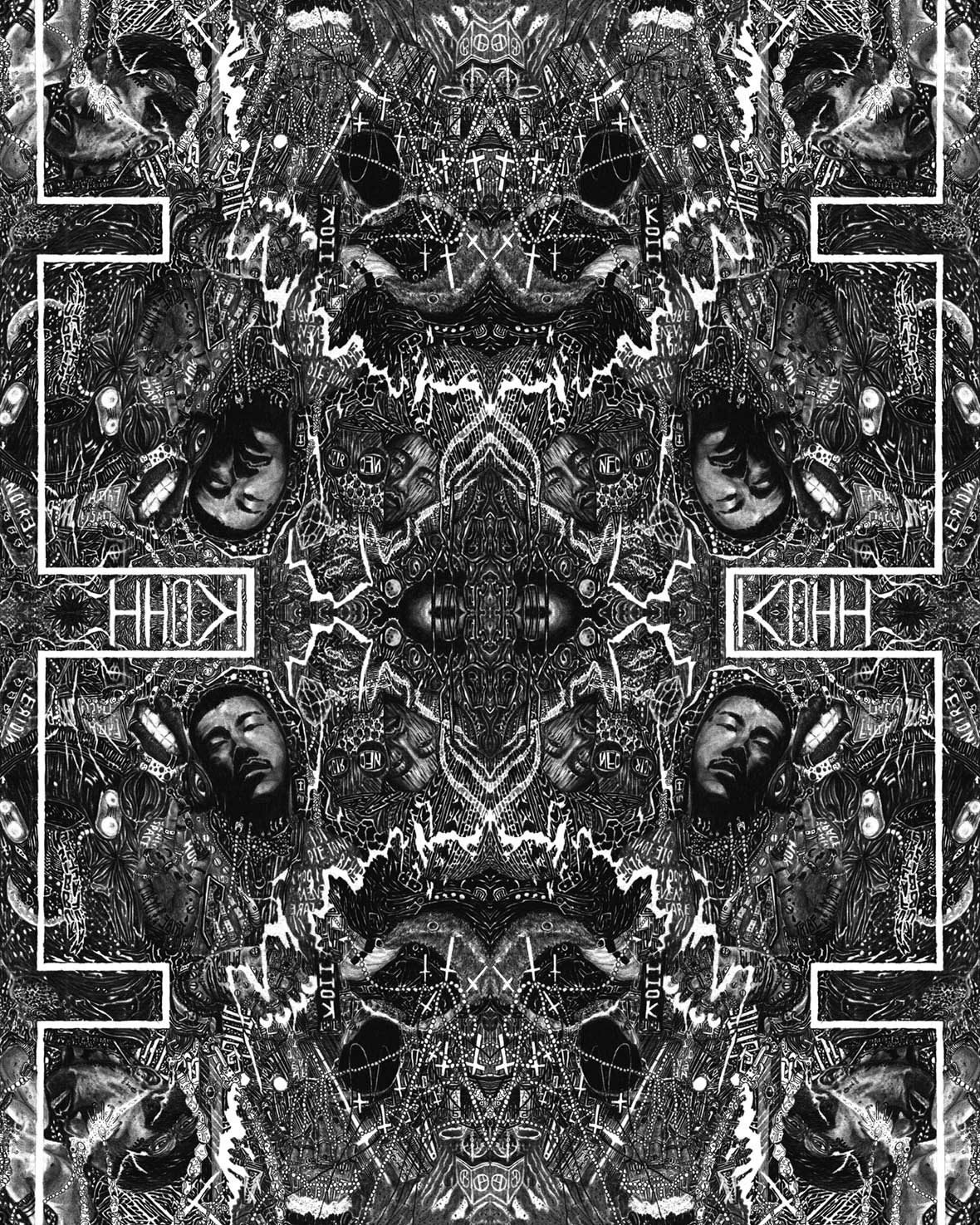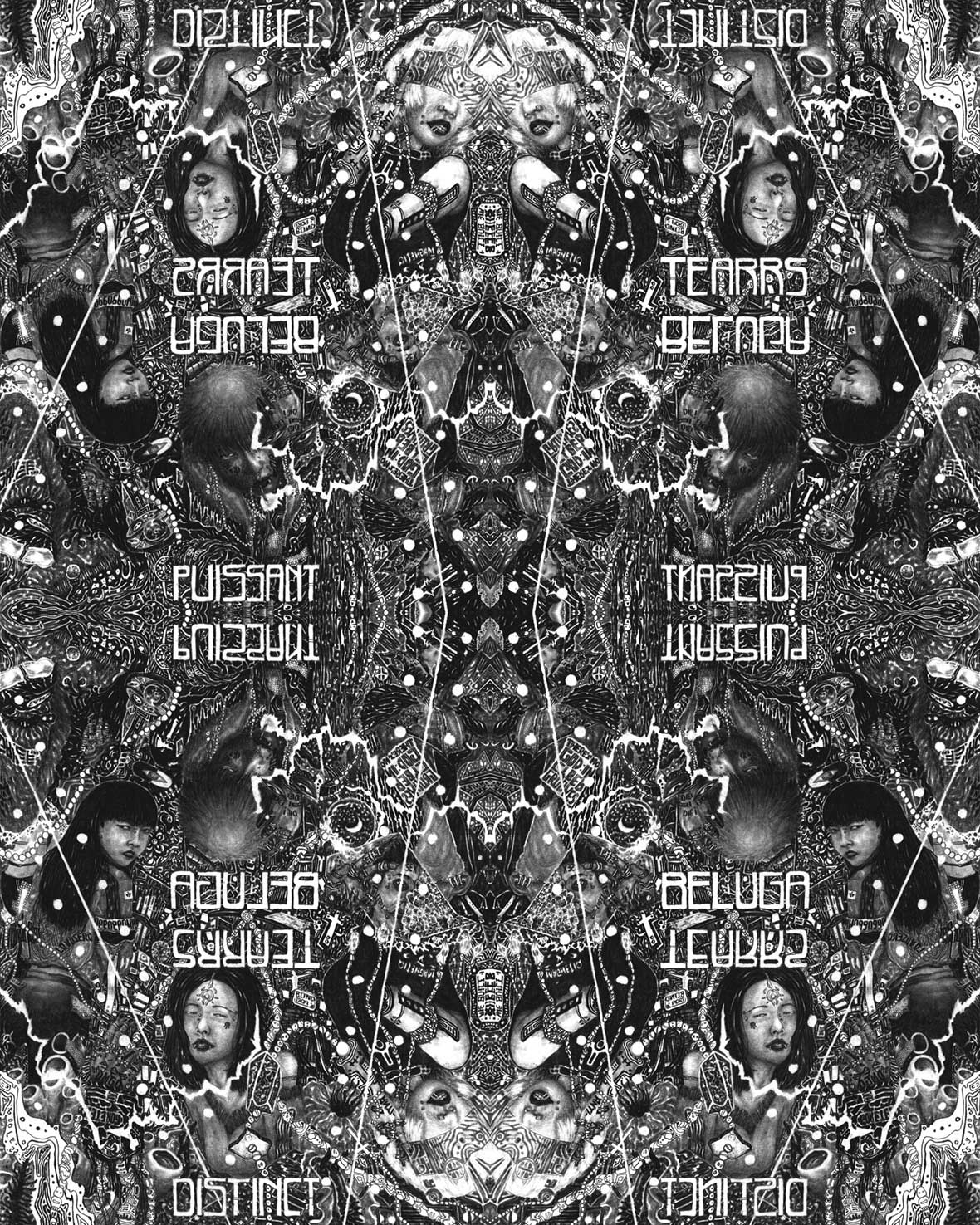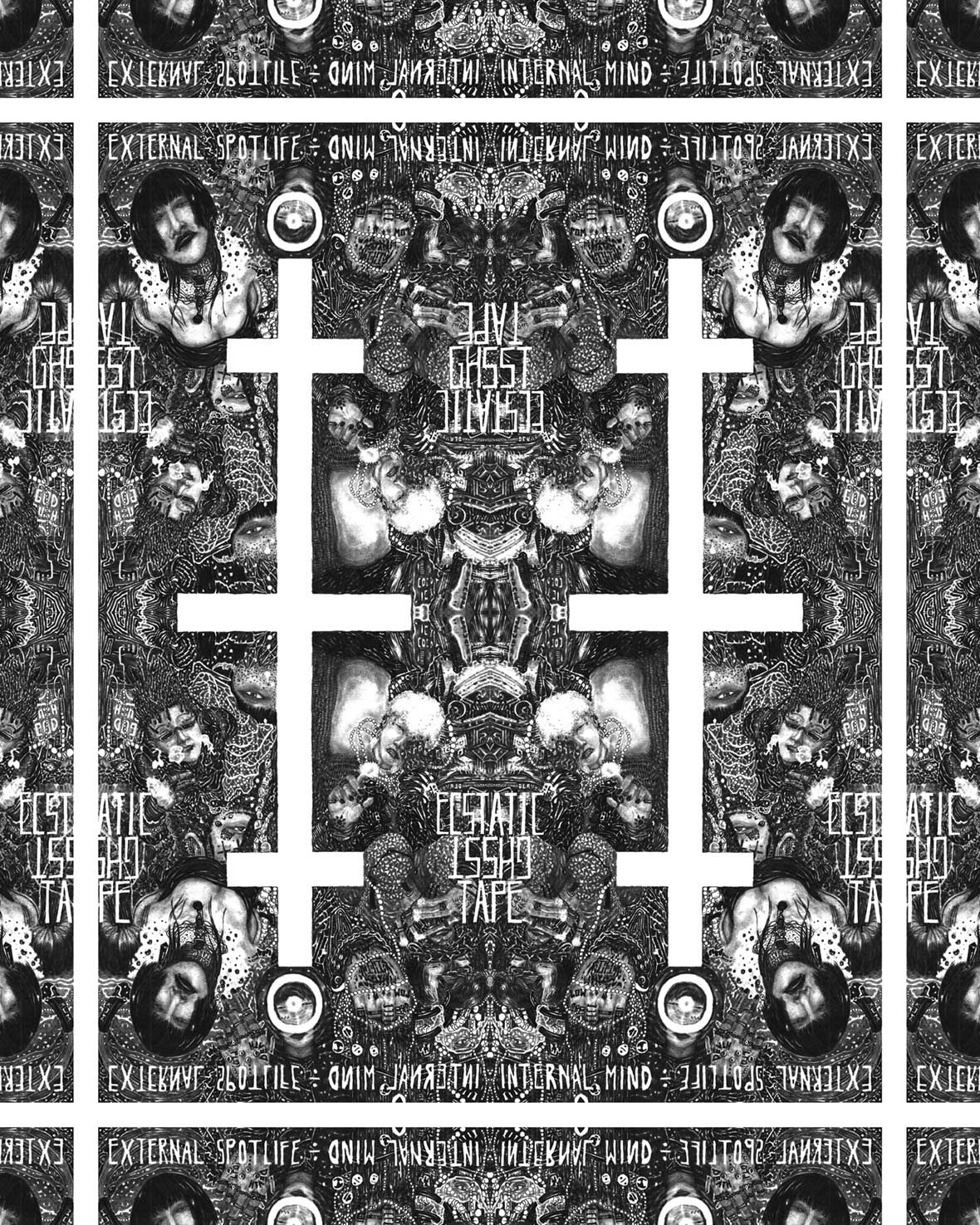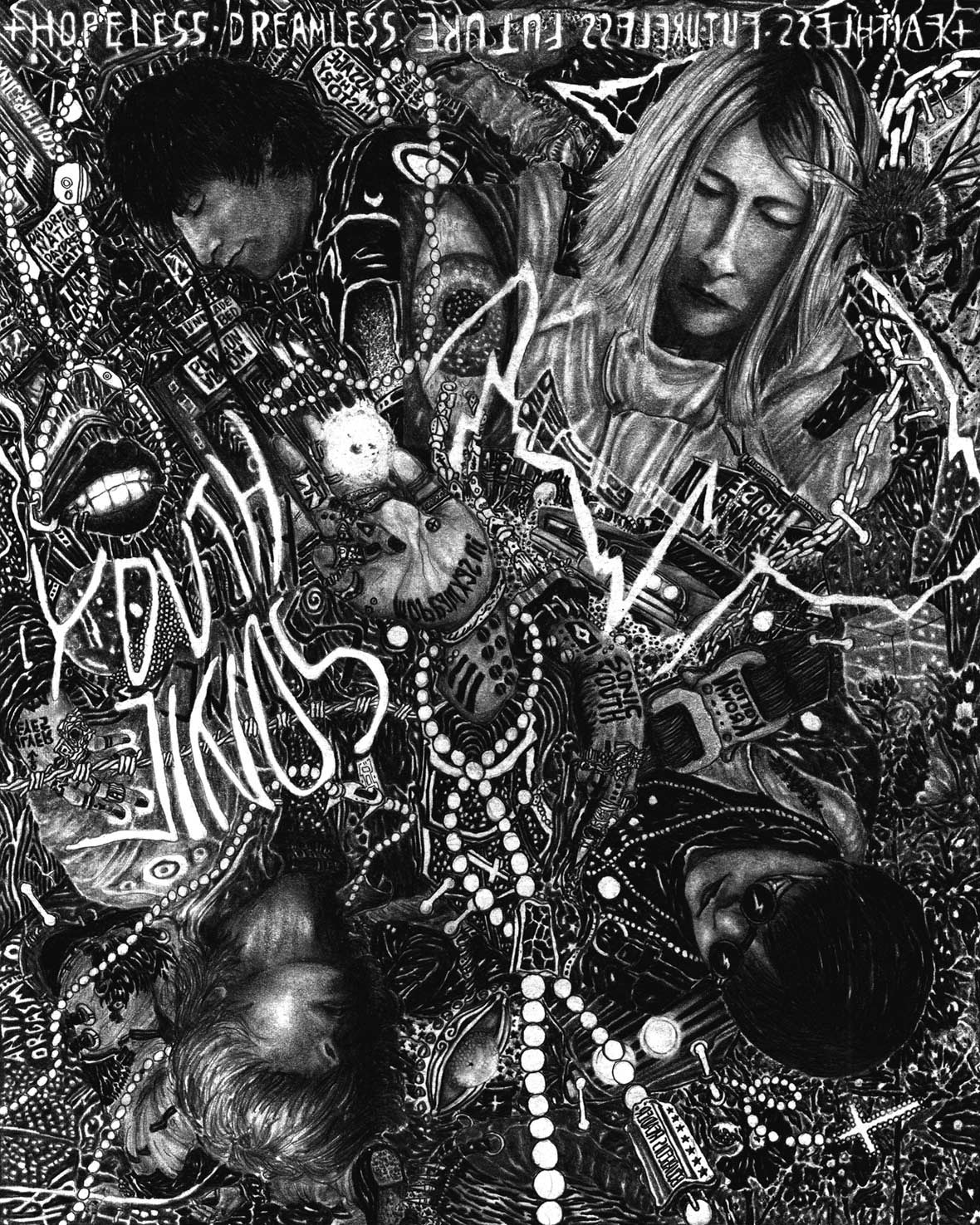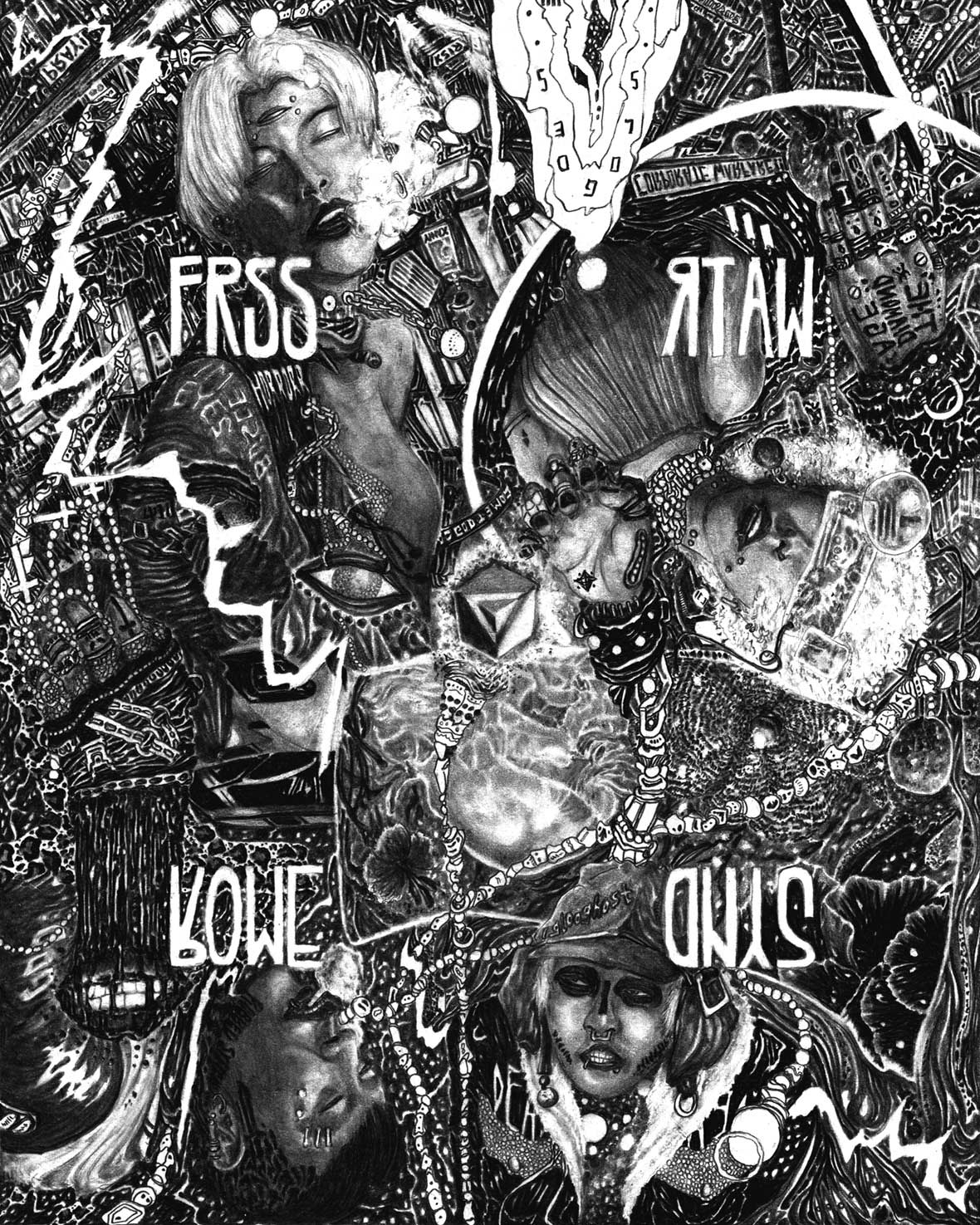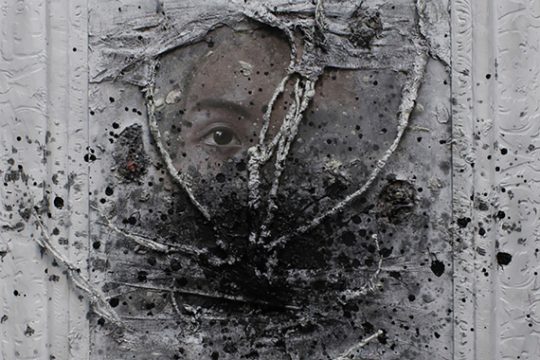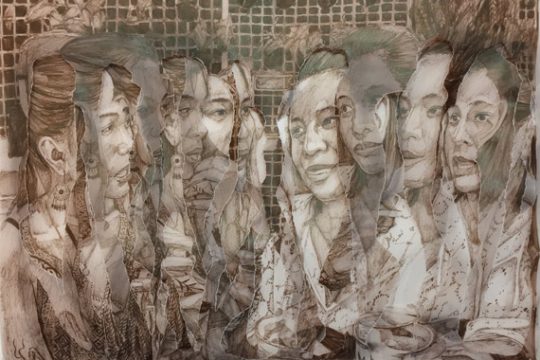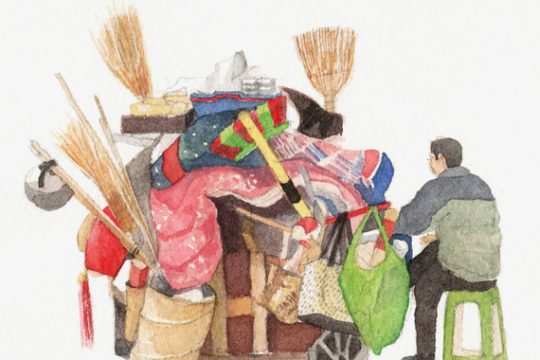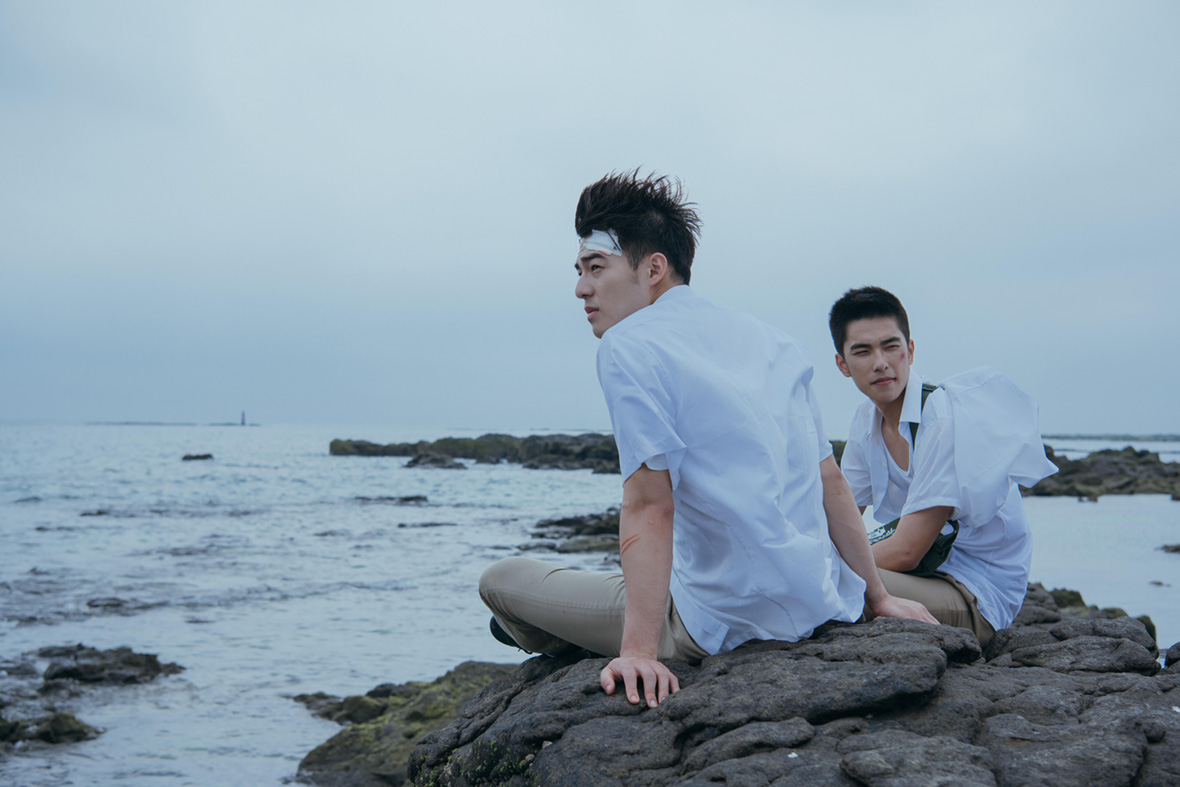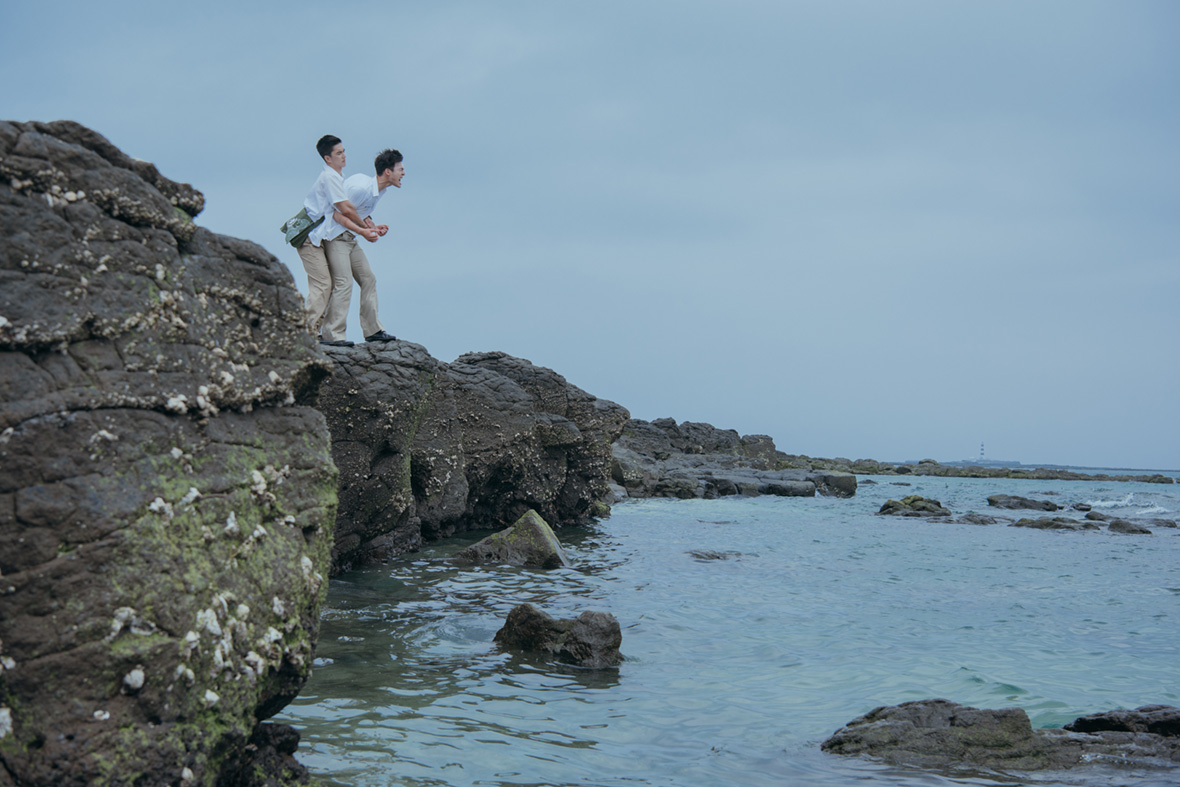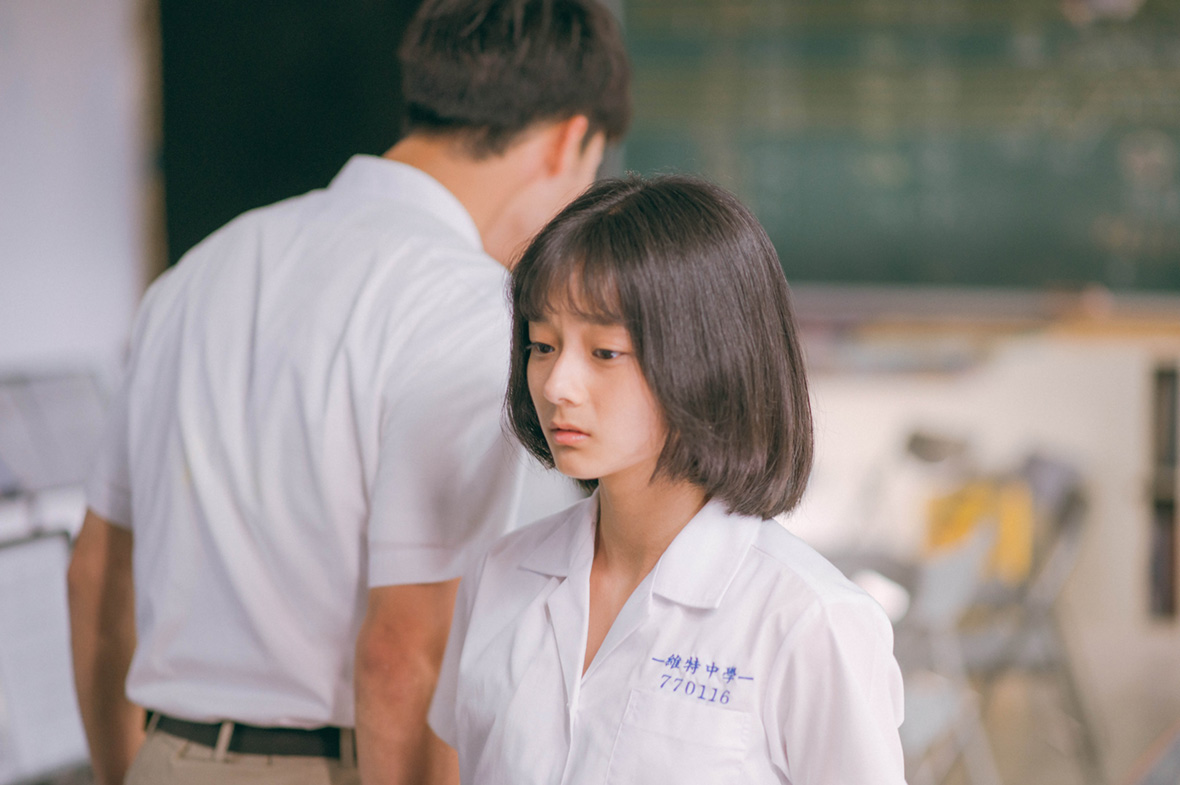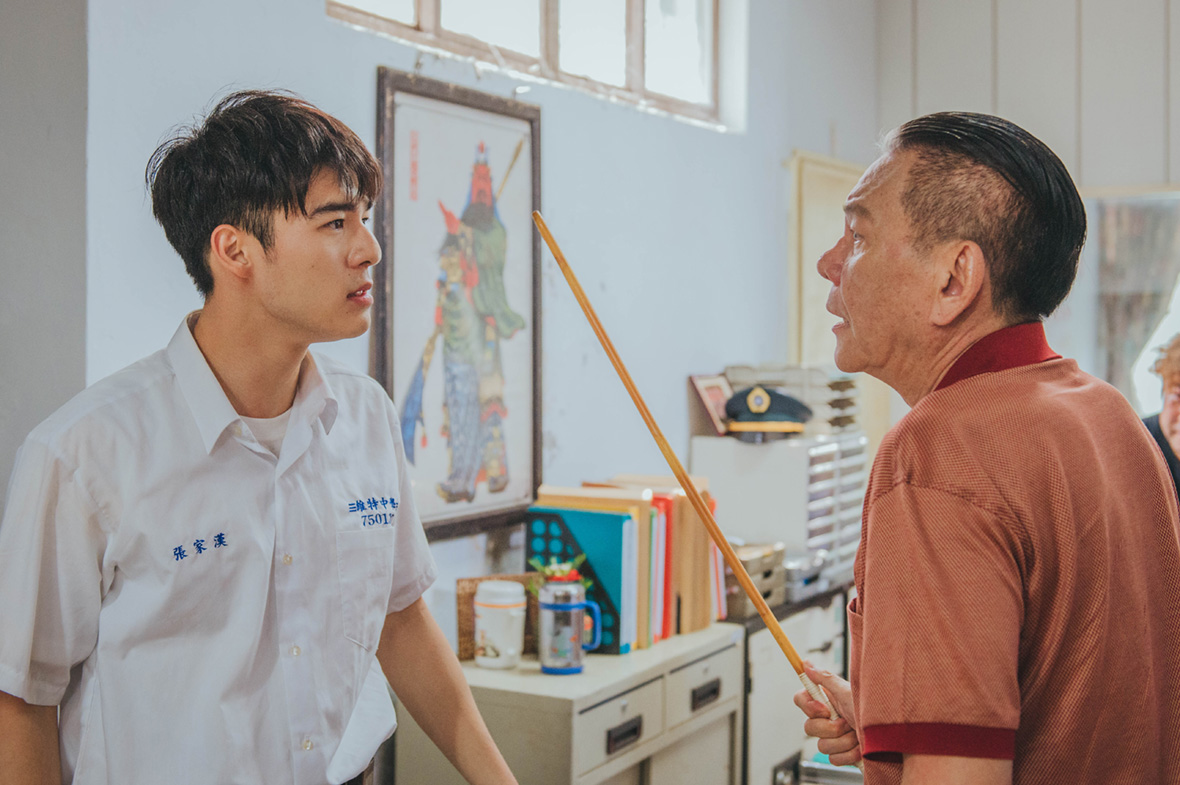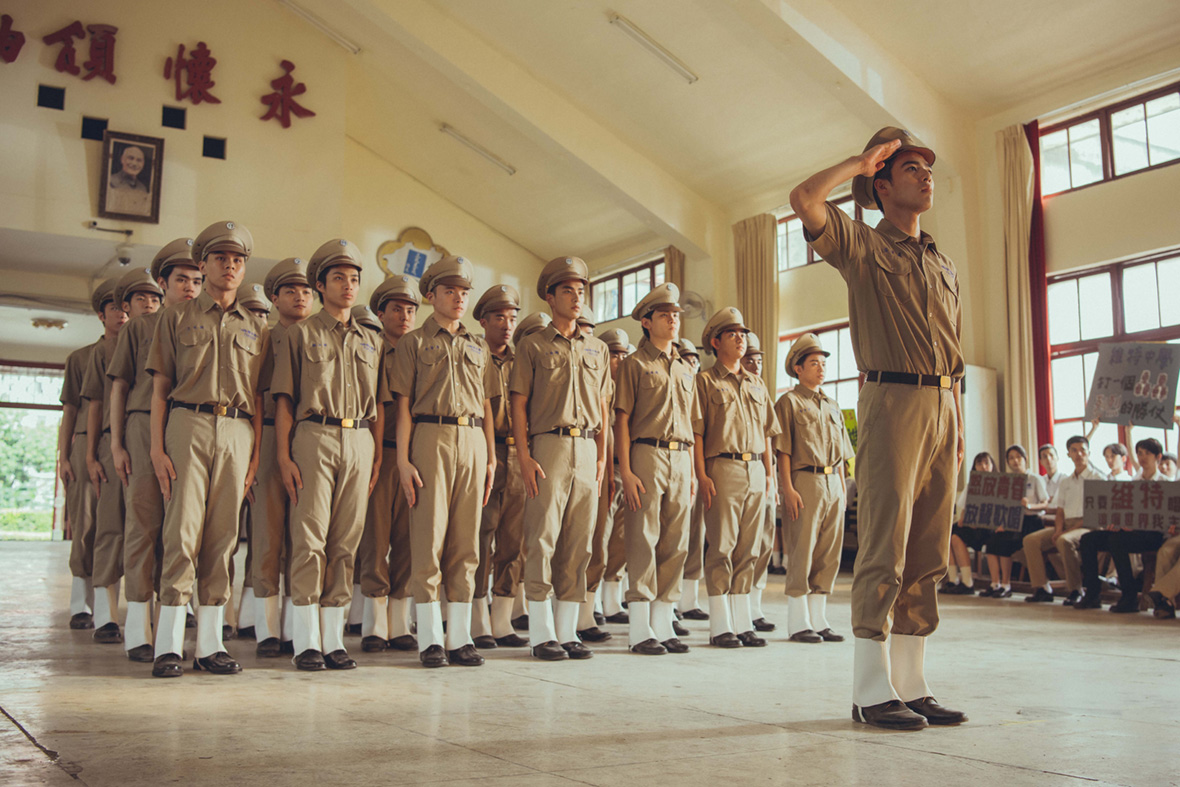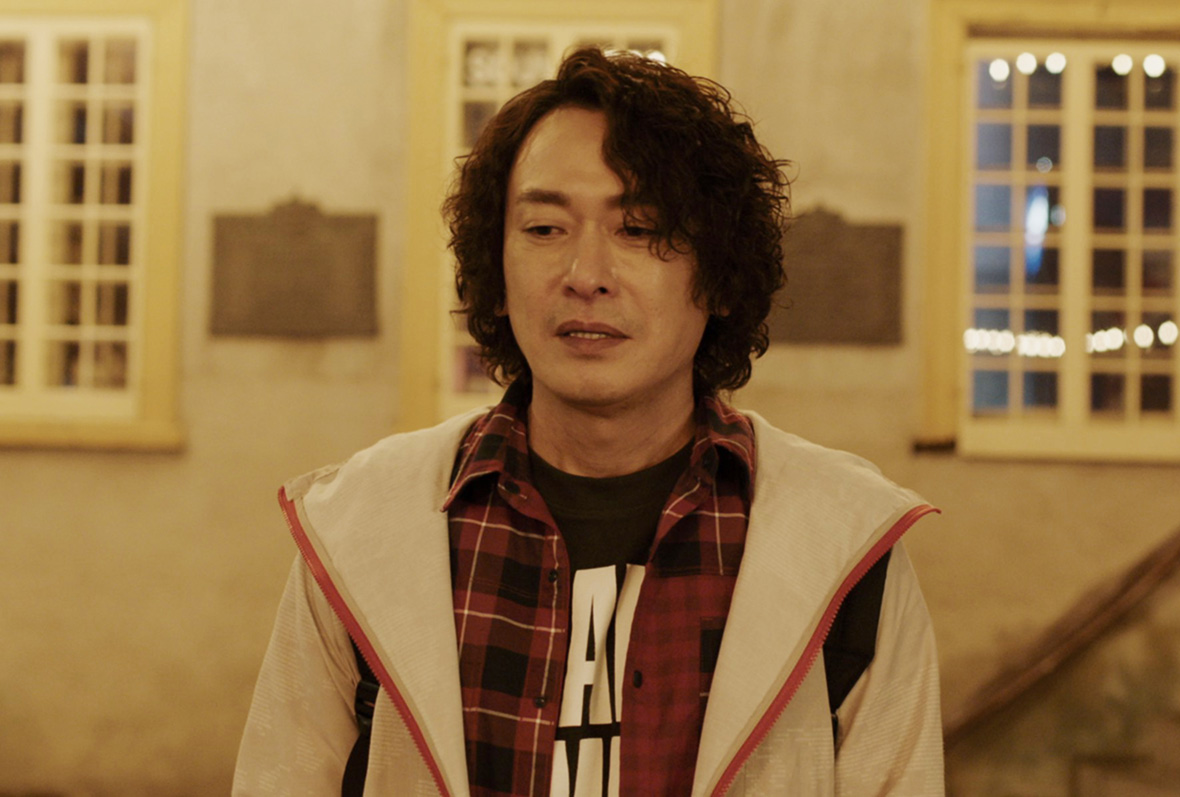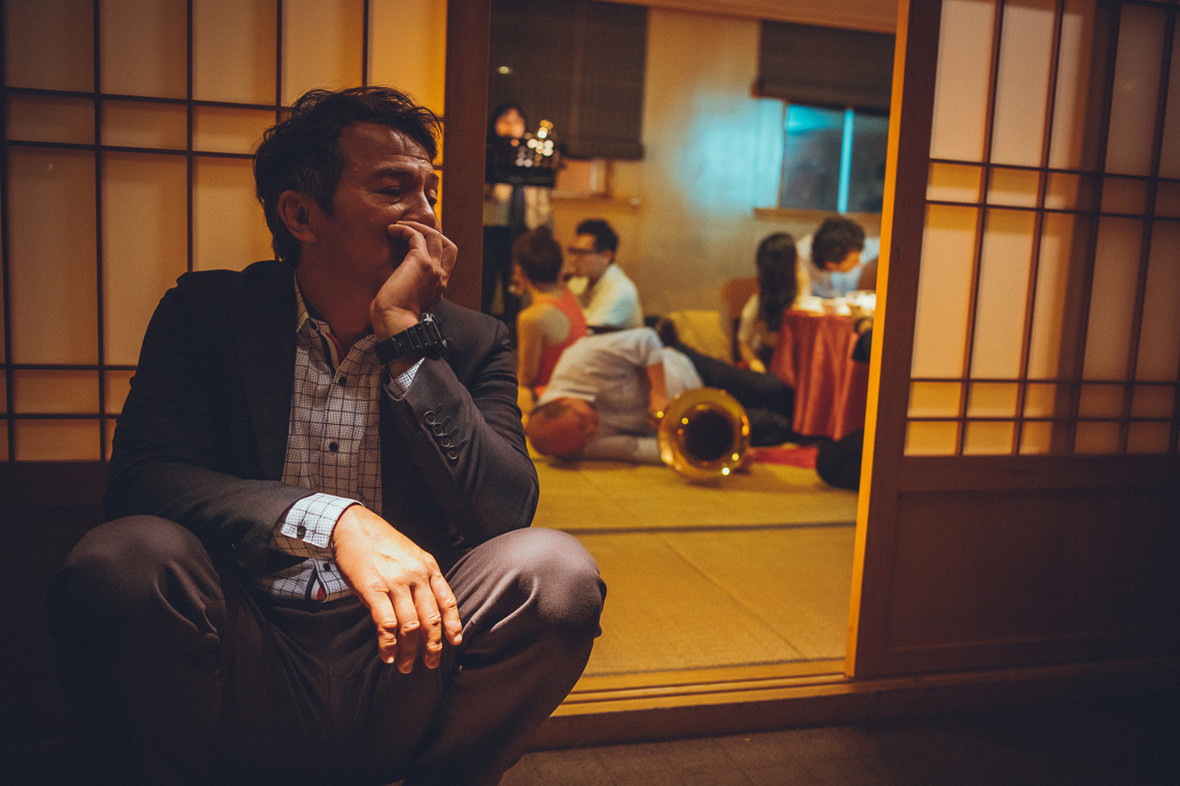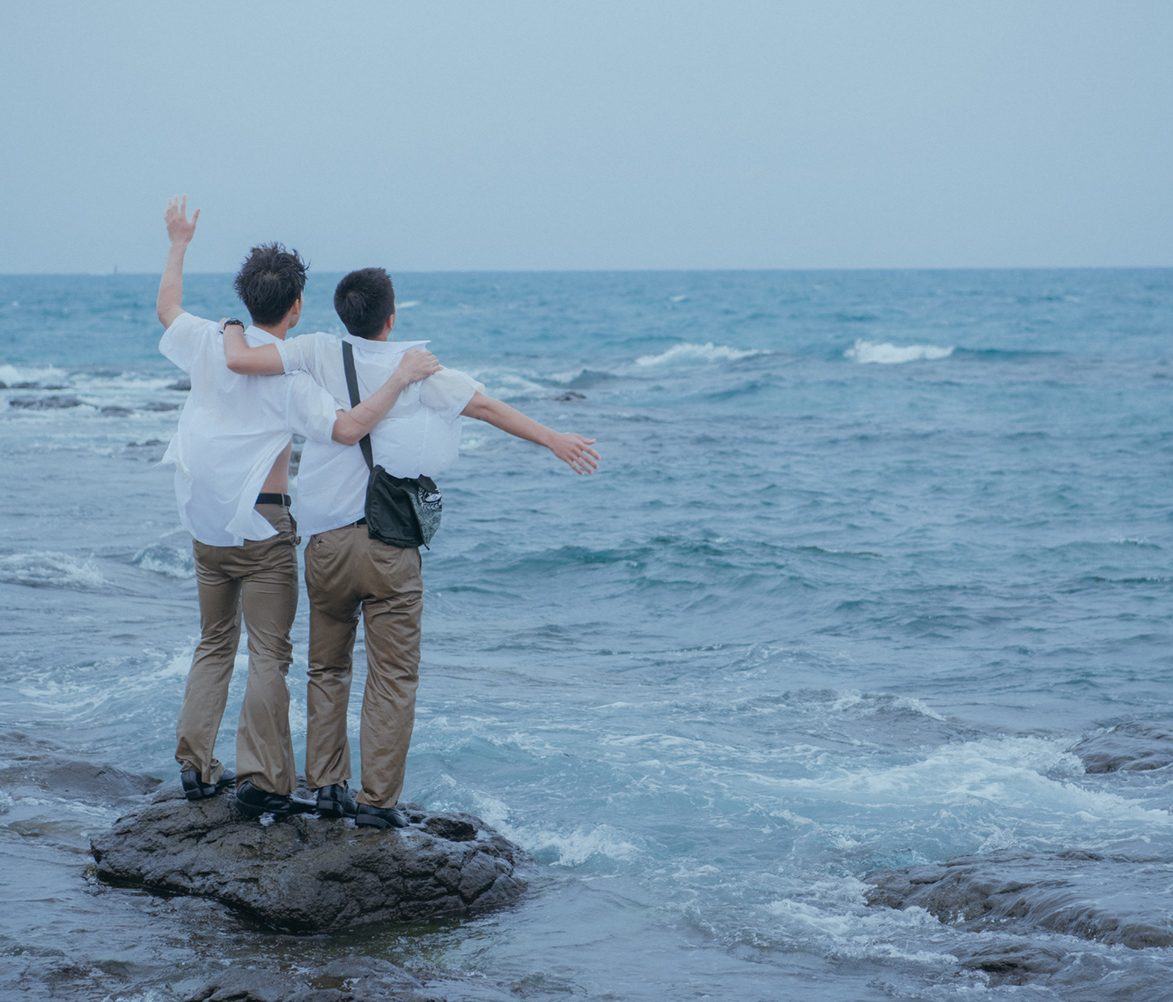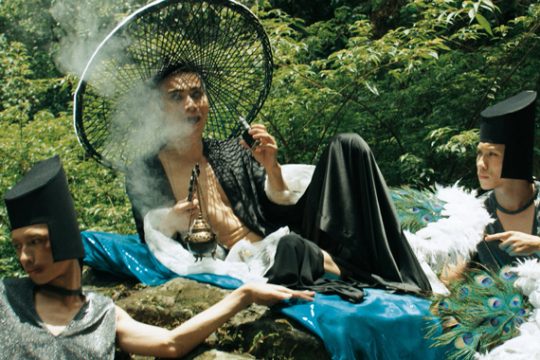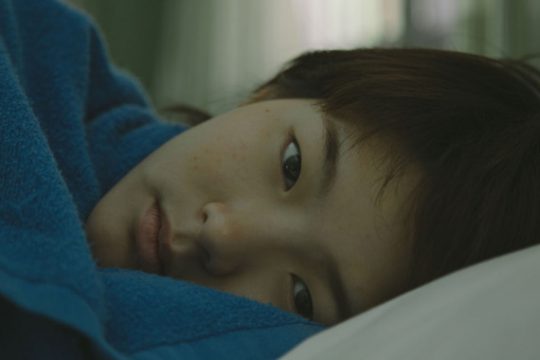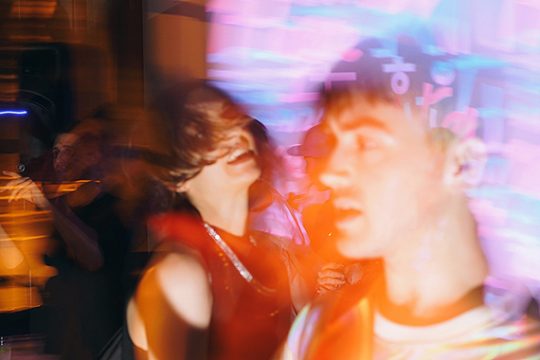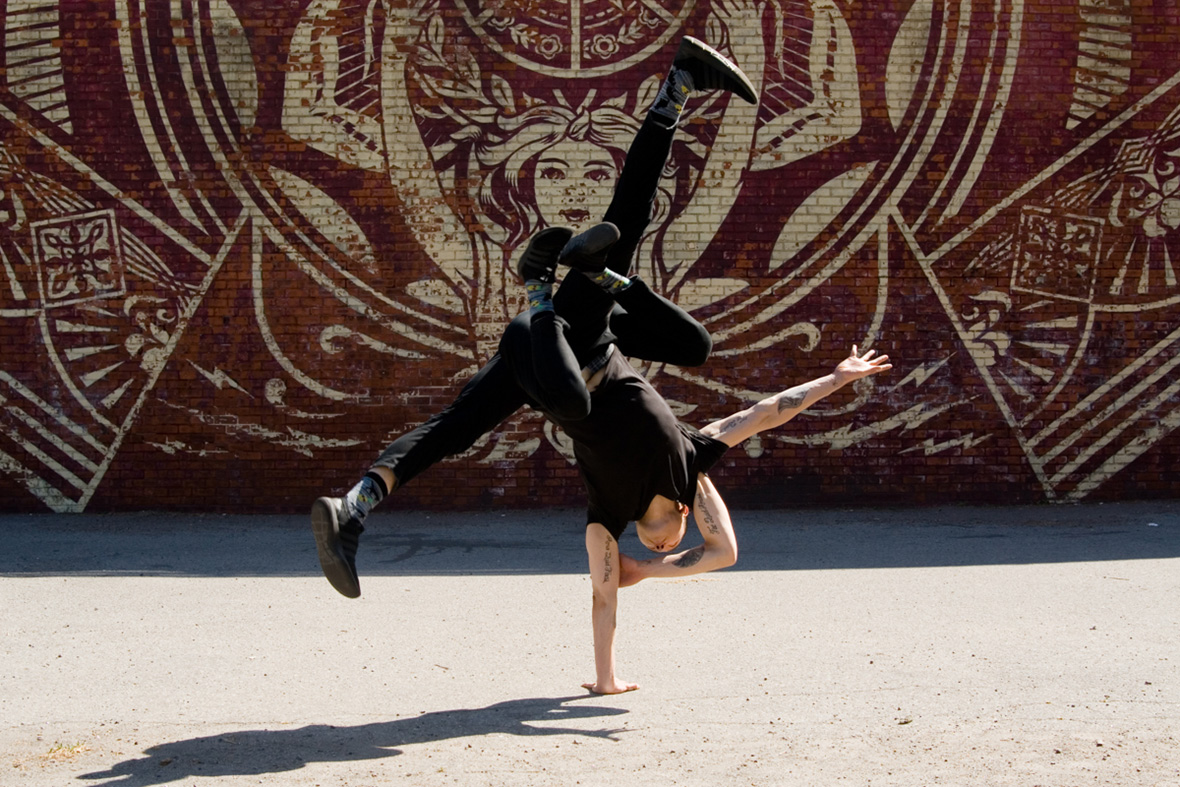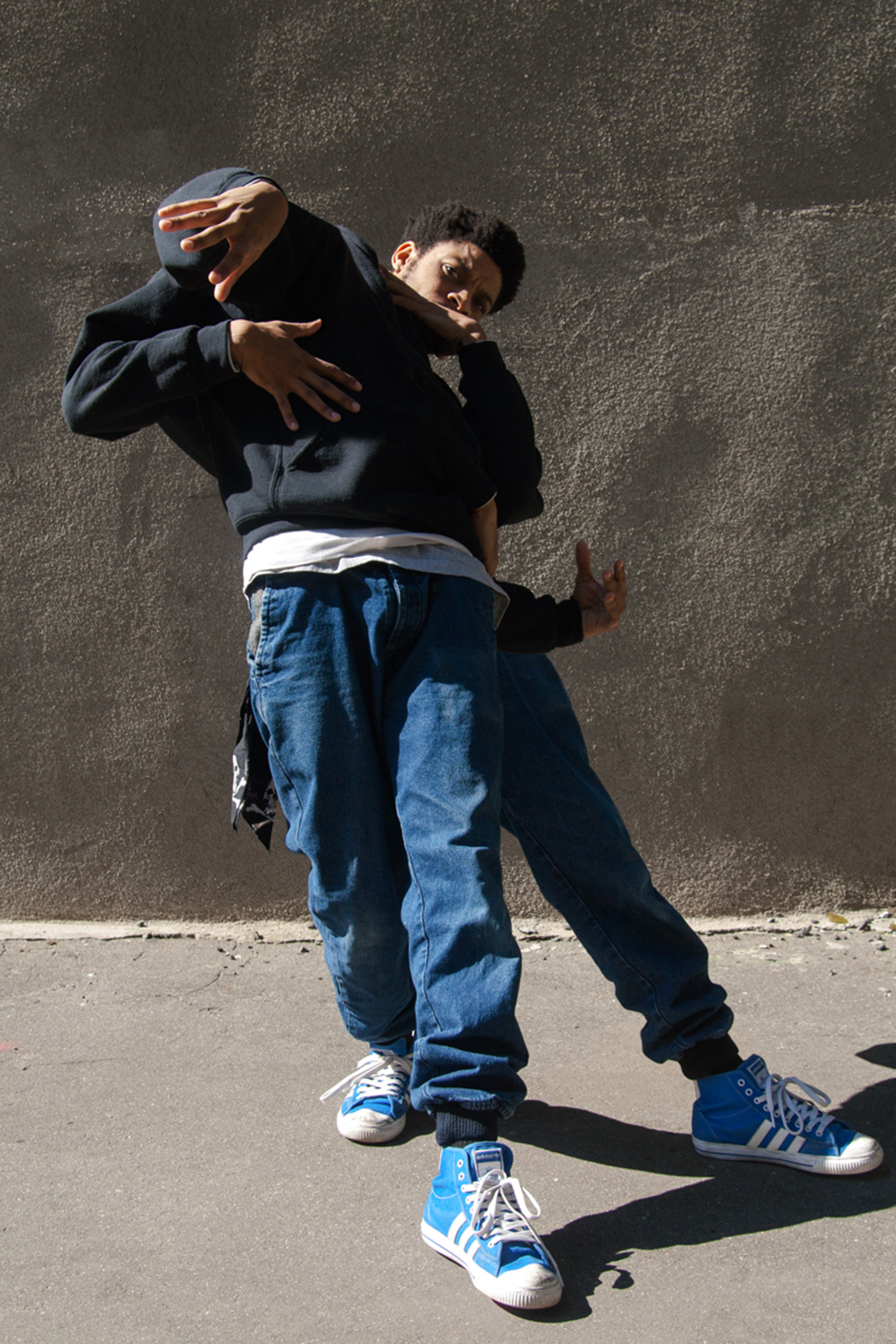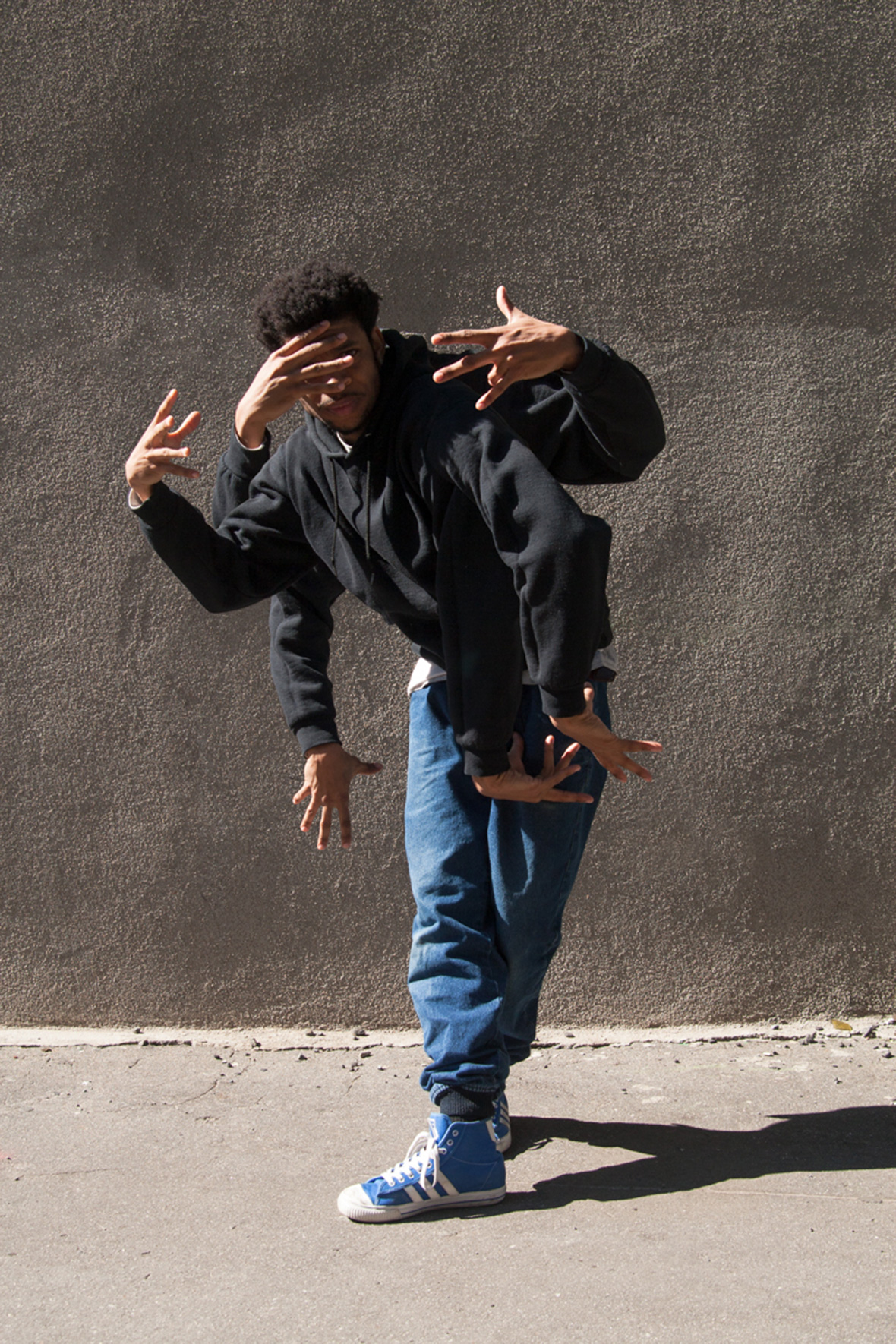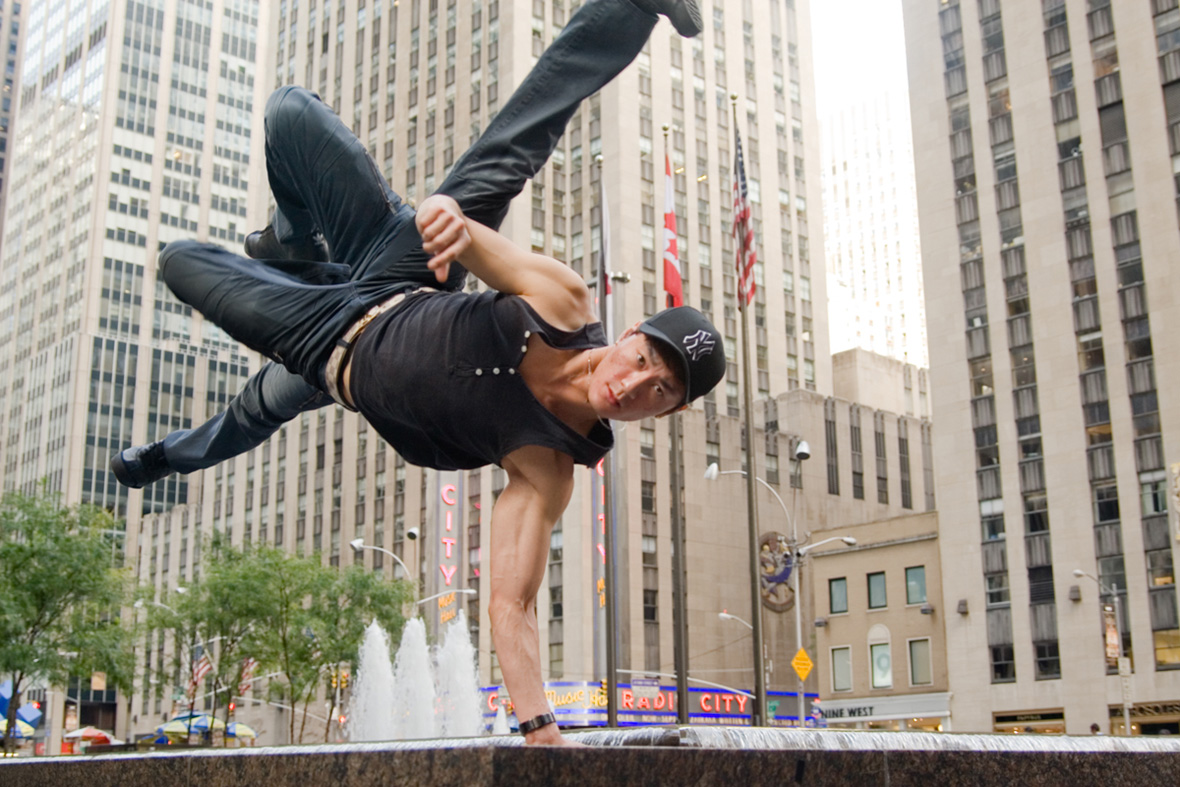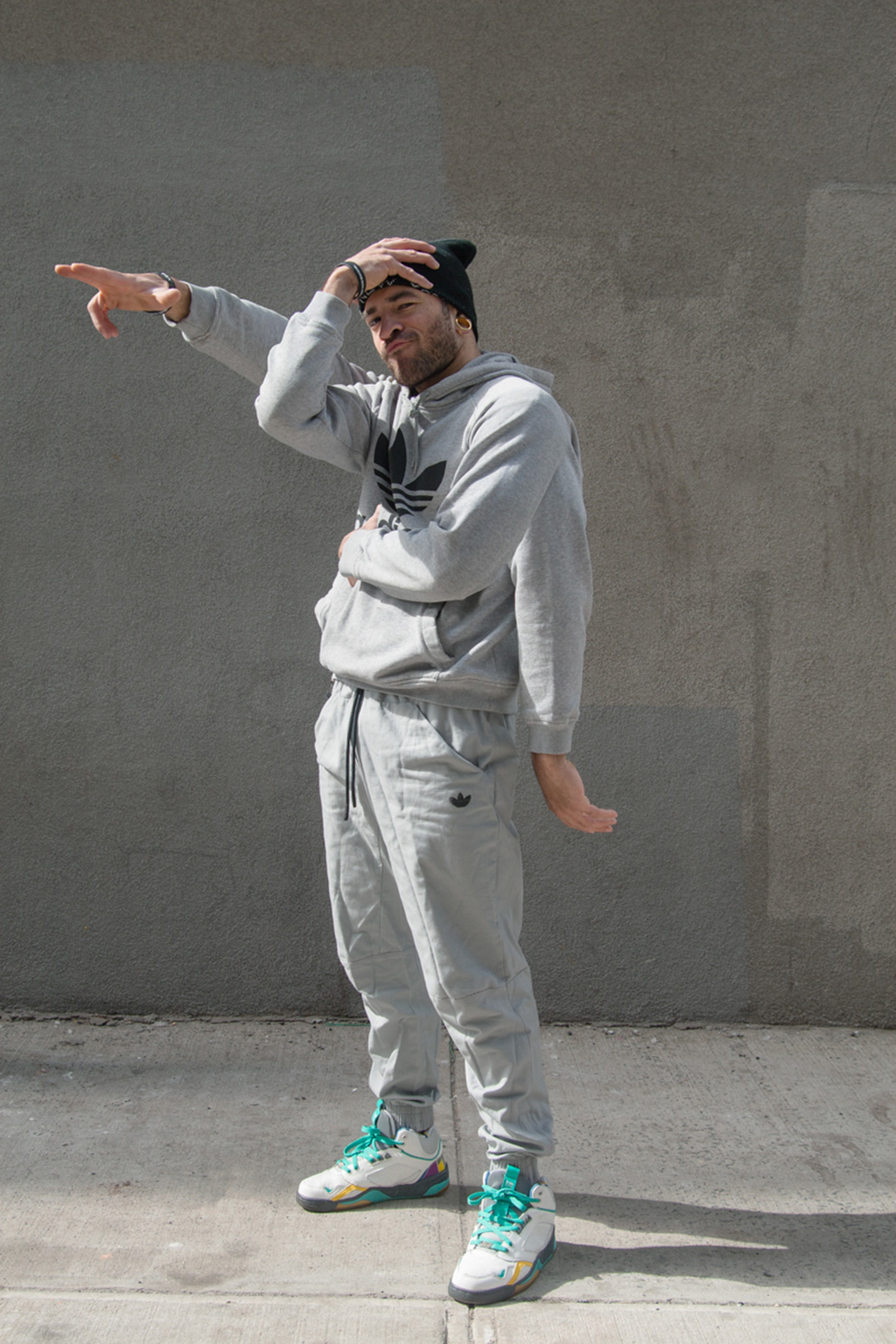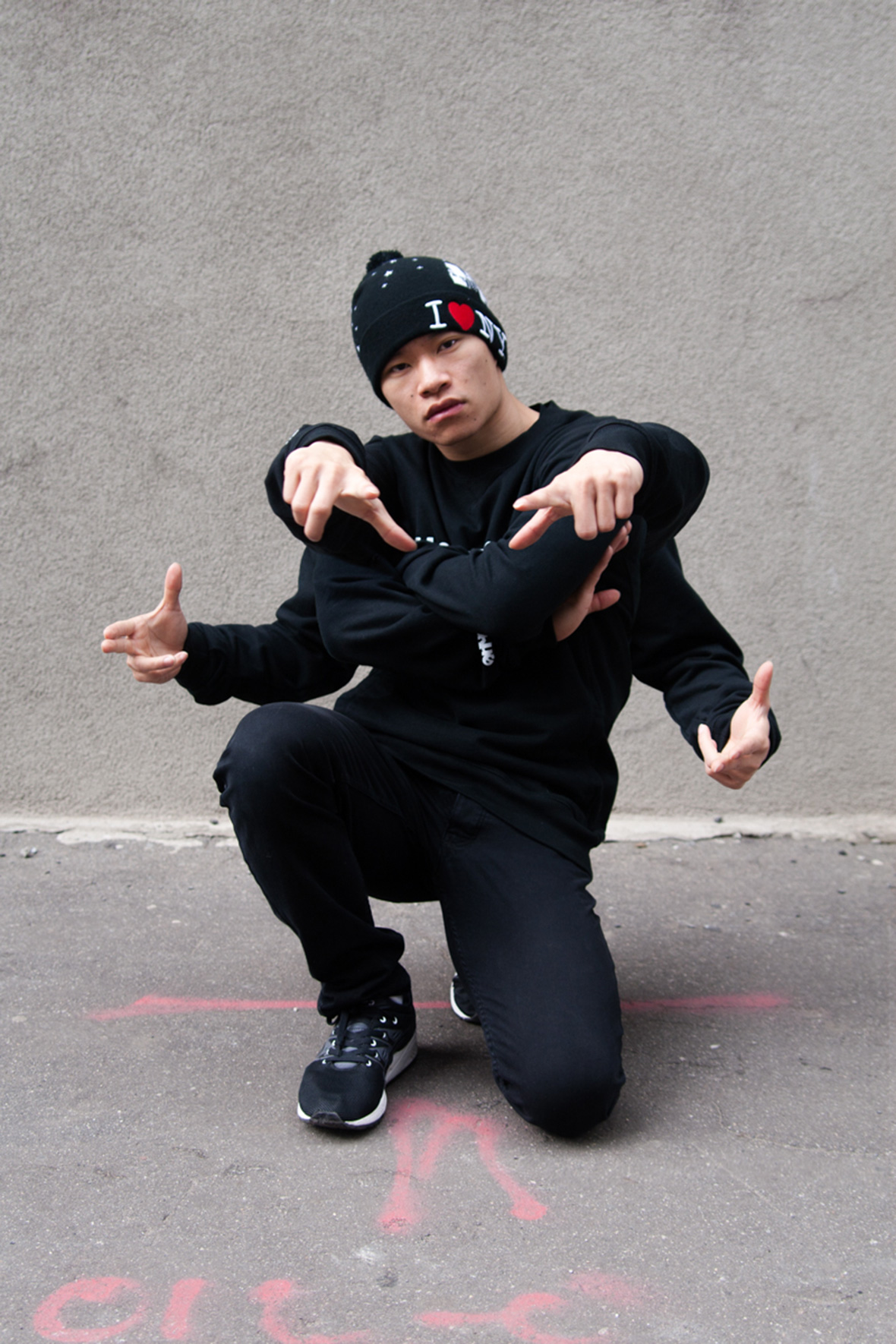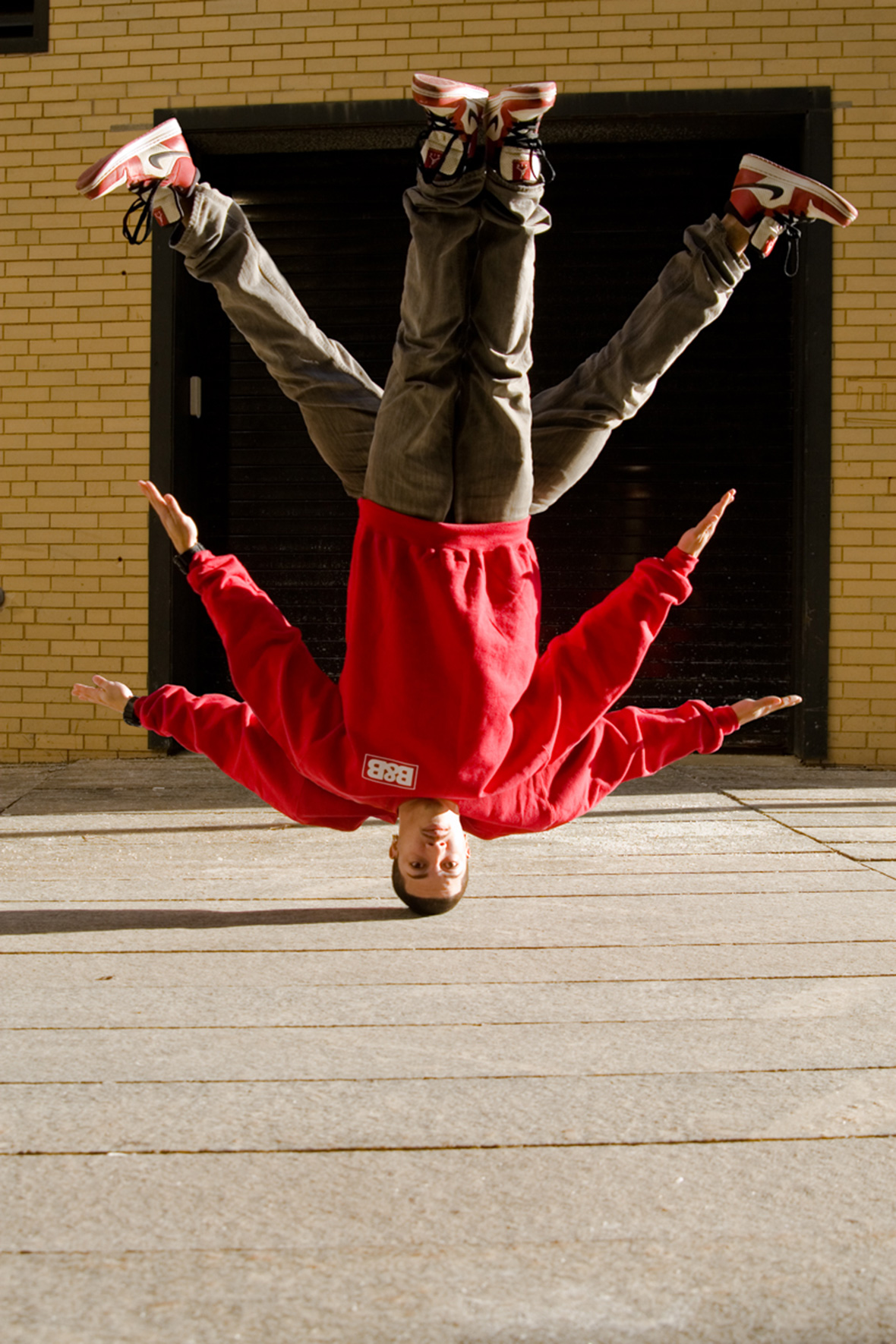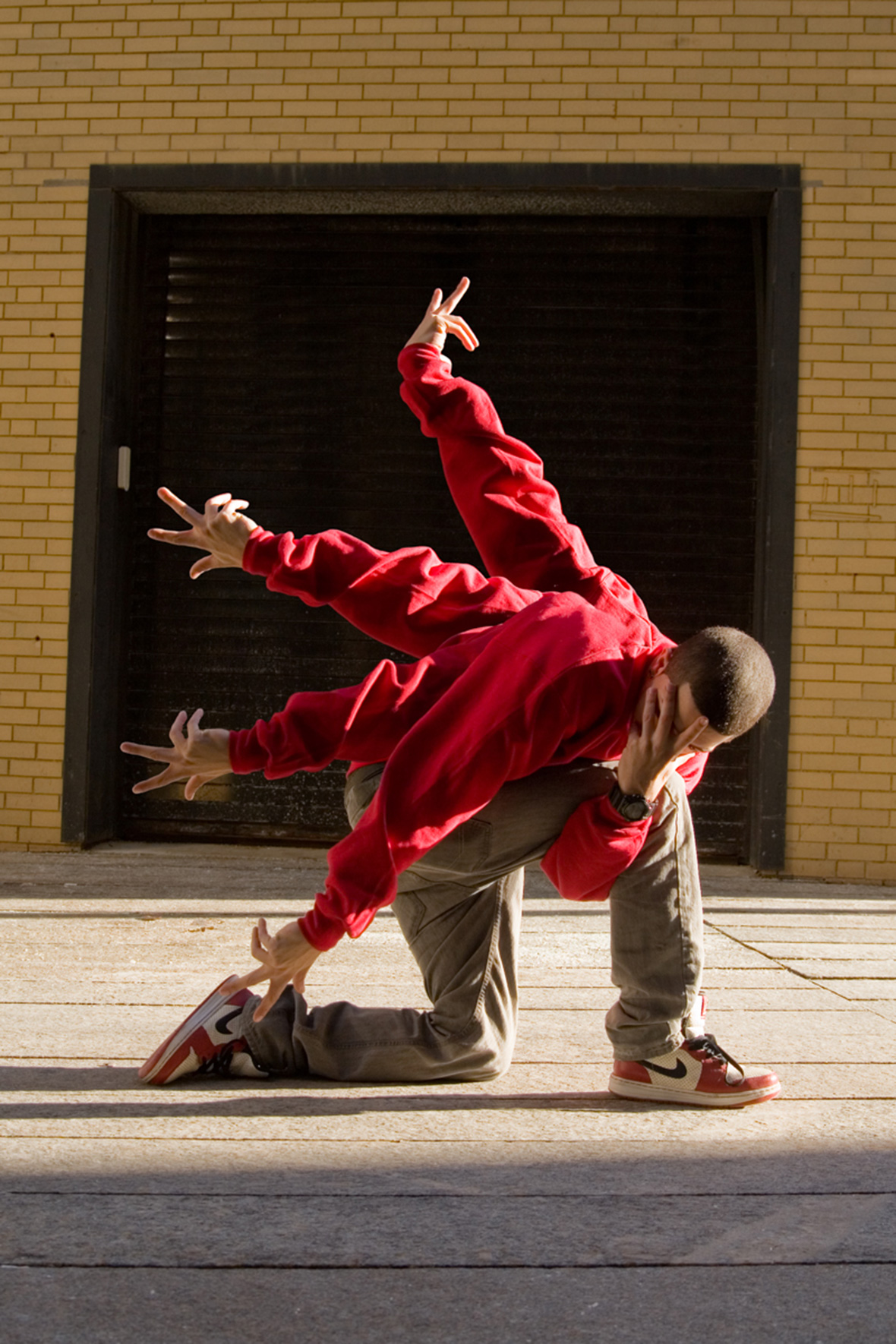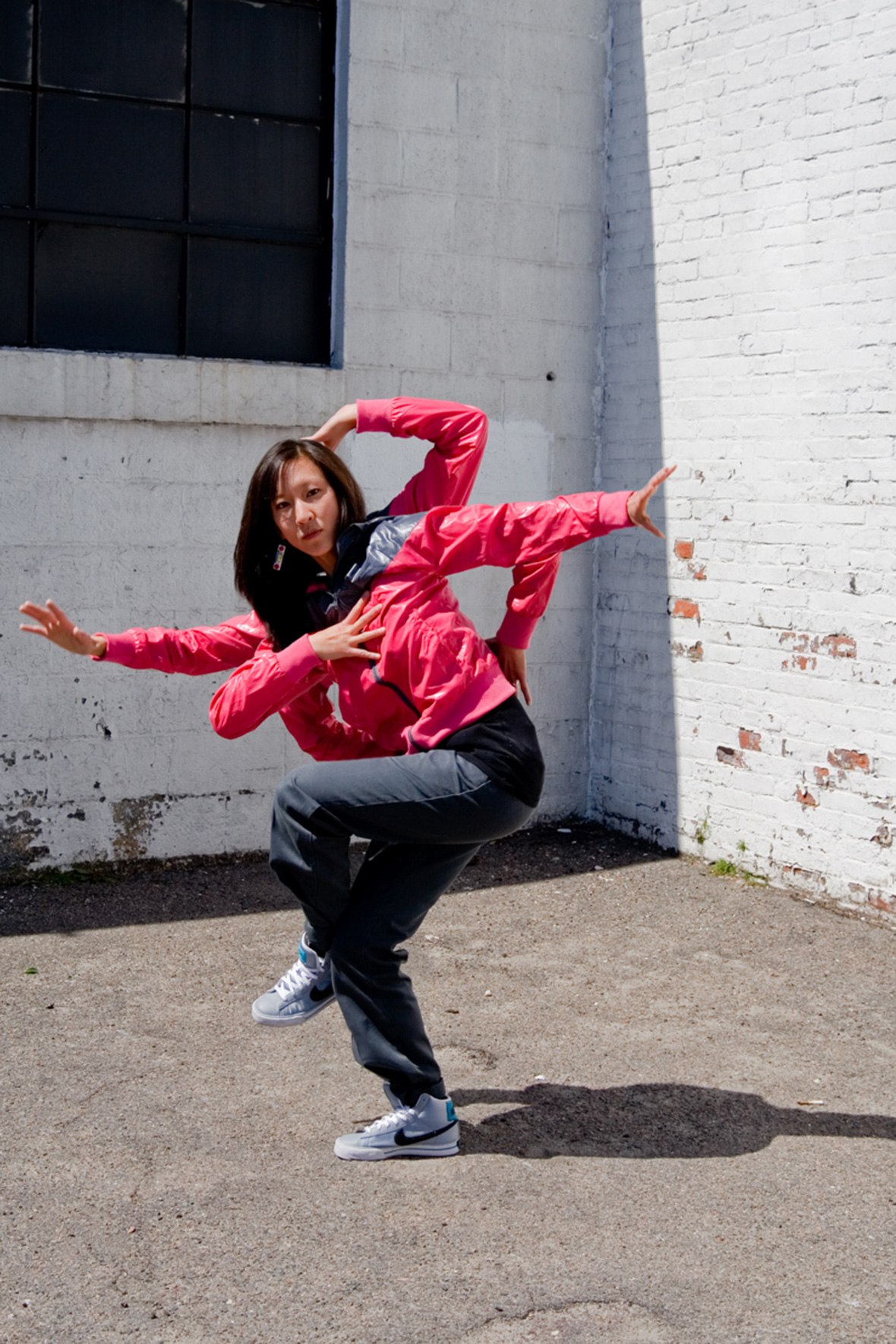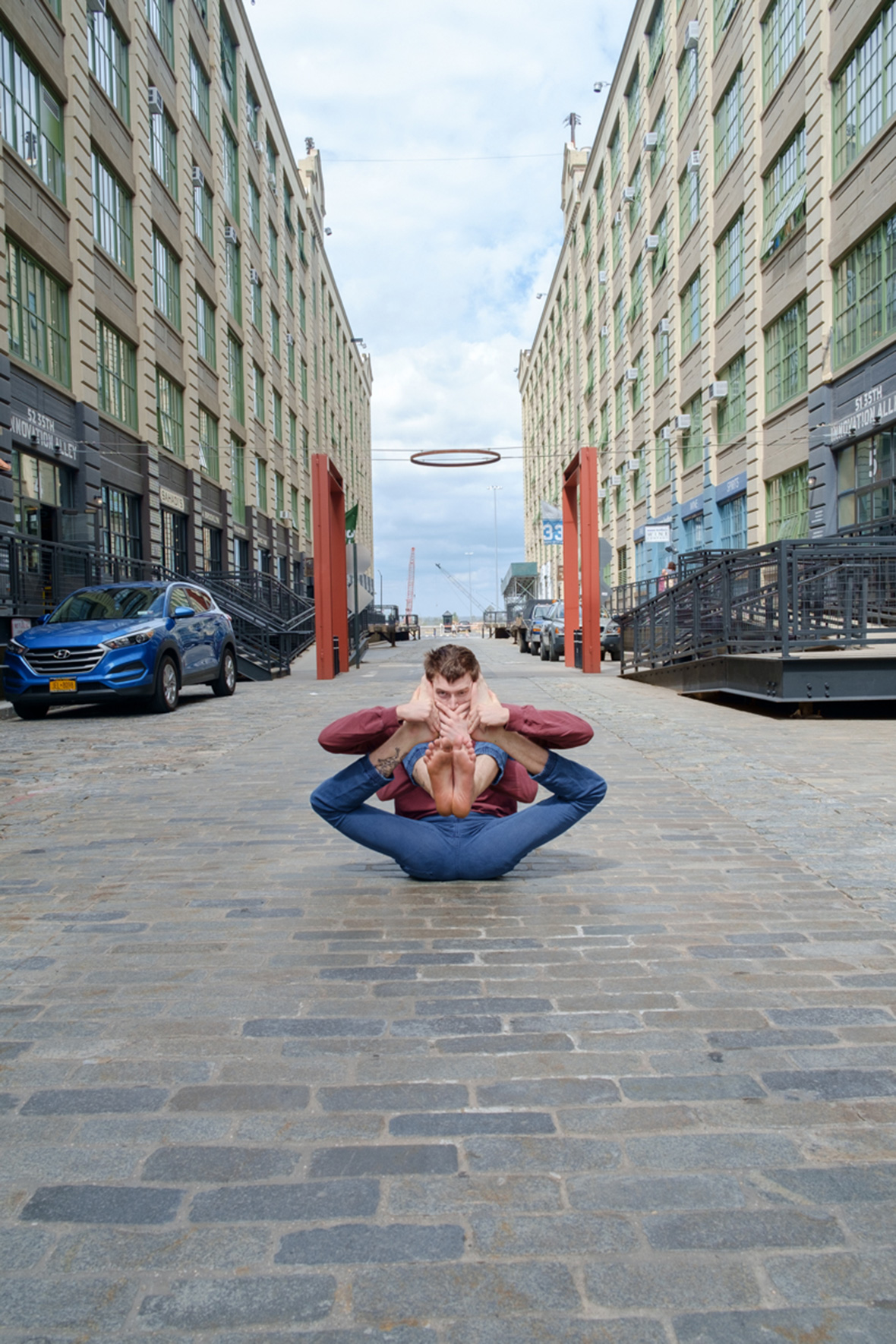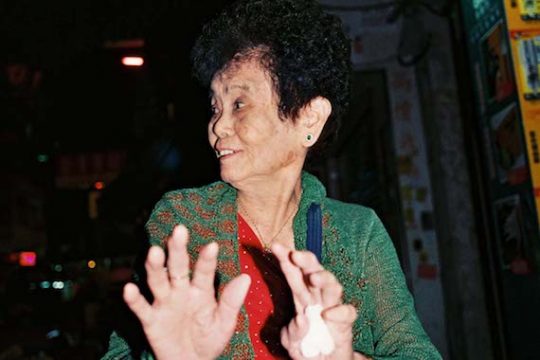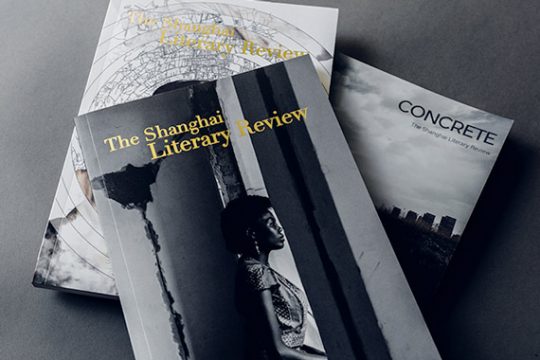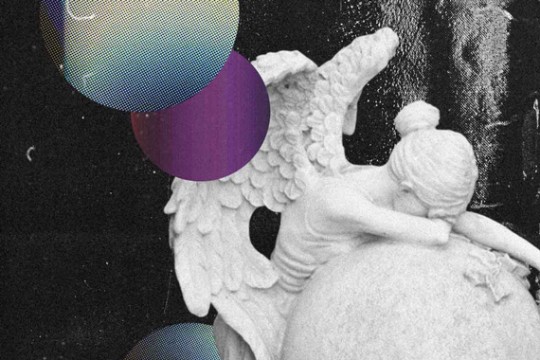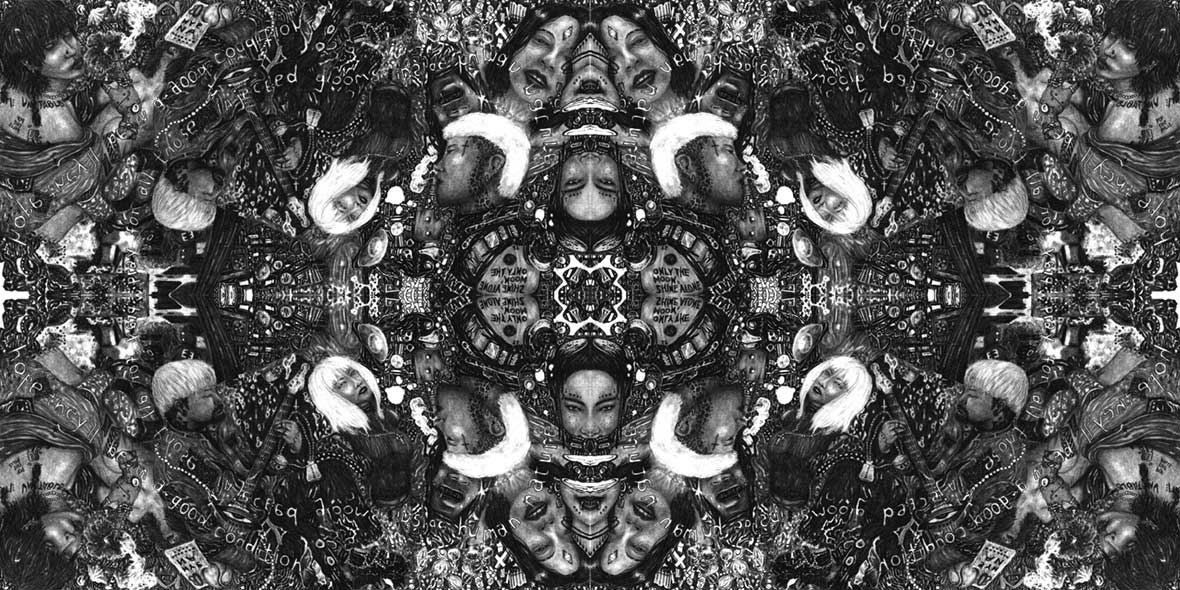
For visual artists, the creative process can oftentimes give form to unarticulated feelings and ideas. Or at least that’s what Bram Christian believes. With only vague ideas in mind, the Indonesian artist puts pencil to paper, allowing his stream of consciousness and instincts do the rest. The results speak for themselves: his black-and-white compositions are visually staggering. Scratchy, abrasive streaks of graphite are mixed with rigidly straight lines, forming scenes that are as intricate as they are raw.
对于视觉艺术家而言,将无法言语的感受与想法可视化是司空见惯的创作方式,至少对于印尼艺术家 Bram Christian 来说是这么一回事。一旦有了模糊的想法,他便会拿起纸笔,全然听从意识和直觉的牵引。作品最终呈现的视觉效果为震撼的黑白色:潦草、狂乱的石墨划痕之间穿插着直挺挺的线条,咋一看错综复杂,却带给人一种 “野生” 的感受。
His art’s resemblance to the badly Xeroxed zines and posters of the underground rock scene is no coincidence. Based in Surabaya, Indonesia’s second-largest city, Bram—whose real name is Christian Dwi Bramantyo—is active in the local rock scene and plays in a band of his own. He says that the visual aspects of rock music are deeply embedded in his psyche and serve as key inspirations for his artwork. Although he hasn’t officially collaborated with many other bands beyond his own, the rough DIY aesthetics of local poster art and zines hold a special place in his heart. “It’s influential, but not intentional,” he says. “It’s always been seared in my memories. I’ve been in love with music since I was very young.”
他的作品看上去就像是粗糙质感的施乐(Xeroxed Art)印刷品和地下摇滚乐海报,这是他有意而为。Bram(原名 Christian Dwi Bramantyo)来自印度尼西亚第二大城市泗水,他在当地有自己的乐队,也常常活跃在地下摇滚圈子。他认为摇滚音乐能在大脑产生丰富的视觉效果,带来源源不断的创作灵感。尽管还没有和其他乐队有过太多视觉上的合作,但泗水的 DIY 海报和杂志艺术在他心目中一直具有特别的含义。他说:“我会有意无意地受到影响,这些作品在记忆里留下深深的烙印。”
(注:施乐艺术起步于上世纪六十年代后期,安迪·沃霍尔等一批艺术家用老旧的复印机进行创作,作品通常以粗糙的黑白打印质感为主要特点,同时具有扭曲、抽离的效果。)
Each of Bram’s pieces takes one to three weeks to complete, depending on his mood and workload. He begins with a hand-drawn sketch, which is then thrown into Photoshop, where he cleans up his lines and builds out kaleidoscopic patterns. Despite the digital touch-ups, he’s insistent on keeping the monochromatic color scheme and scratchy textures of his pencil art. “It’s got a very urban mood,” he explains.
Bram 的每件作品通常需要一到三个星期才能完成,主要取决于他自己的心情和工作量。他通常会先手绘草图并导入到 Photoshop 中,然后慢慢梳理其中的线条,构建出万花筒般的图案。虽然是数字创作,但他仍坚持将黑白色彩设计以及铅笔绘图的质感保留下来。他解释说:“这样会让作品带有一种都市的情调。”
A lot of Bram’s art revolves around musicians he appreciates, and he’s a fan of a variety of genres. Korean rapper Jvcky Wai and Japanese emcee KOHH are two recent sources of inspiration. Although he likes old-school Indonesian rap, when it comes to contemporary rap, he prefers to look towards other Asian cities. “I’ve also done a lot of work referencing the local scene here in Surabaya, and they’ve shown me so much love back.”
Although the characters in his work often look like punk rockers, it’s more of a sign of the times than rooted in a preference for the genre. From high fashion circles to rapper cliques, the punk look and attitude are being embraced globally. “I listen to a bit of punk but appreciate the look more,” he says. “It’s futuristic in a way, in that there’s no future in sight for people who believe in punk ideologies—I believe anarchy is a natural phase in the cycle of urban rebirth.”
Bram 的作品中,很多角色充满了朋克元素,但对他而言,这些角色更像是时代的标志,而不是出于对这种音乐流派的偏爱。从高级时装界到说唱圈子,朋克态度在全球越来越流行。他说:“我也听一点朋克乐,但更喜欢其美学风格。从某种意义上说,这是一种未来主义,因为对于相信朋克主义的人来说,未来是崩坏的。我相信无政府状态是都市重生的必经阶段。”
Like our stories? Follow us on Facebook and Instagram.
Instagram: @bram.christian
Contributor: Mike Steyels
Chinese Translation: Olivia Li

